‘It
feels like we are the last group of international students’

Quinnipiac international students faced with delays and denials for student visas
By AVA HIGHLAND News Editor
Several Quinnipiac University international students faced challenges obtaining their student visas for the 2025-26 school year as a result of pause on student-visa interviews and more indepth checks.
The pause lasted from May 27 to June 18, leaving students to have a delay in obtaining their visa and many having to defer to the spring semester, including Quinnipiac students. Other factors contributed to these difficulties as well, causing some to be denied their visa altogether. Overall, Quinnipiac saw around 40 potential graduate students not receive their visas.
This has affected international students trying to attend schools across the U.S. For comparison, last year, “more than a million
international students studied in the U.S., contributing about $43 billion into the U.S. economy,” according to NPR.
But this year, NPR cited a predicted drop of about “150,000 new international students this fall, leading to a decline of about 15% overall. If that happens, local economies could lose as much as $7 billion in spending and more than 60,000 jobs.”
THE PROCESS
After a student is accepted into the university, they are required to provide documents to the international admissions team in order to process the I-20 immigration document — this includes their passport and proof of funding.
“With the I-20 in hand, they begin the F-1 visa application process by paying the SEVIS I-901 fee and completing the DS-160, the on-
line nonimmigrant visa application,” Director of International Students and Scholars Sarah Driscoll wrote in an email to The Chronicle.
Students end up paying over $400 in fees.
“Students pay the $350 SEVIS fee, fill out and submit the DS-160 form online, pay the $180 visa fee,” first-year master’s in informatics-health track graduate student Hellen Mwangi wrote.
They then move on to scheduling an interview at the nearest U.S. embassy or consulate in their home country. The interview results in one of three different colored slips, each with a different outcome — blue (visa approved), pink (visa denied) or yellow (administrative processing required before visa approval).
“At the interview, they present various documents to the consular officer and answer questions about their academic plans, ties to
their home country, and how they intend to fund their education,” Driscoll wrote. “The interview is typically three minutes or less. If approved, their passport is returned with the F-1 visa stamp, allowing them to travel to the U.S. to attend QU.”
VISA CHALLENGES
Visa-related challenges are not new.
“Visas can be denied for a variety of reasons, but some of the most common issues are if the applicant doesn’t clearly demonstrate they intend to return home after their studies, inadequate financial support, prior visa violations or concerns raised during background checks. Students that were denied do have the ability to apply for a visa again, and we have certainly had students be approved on their
Recycling on campus trades efficiency for convenience
By VIVIAN GAGE Copy Editor
Recycling at Quinnipiac University is not as efficient as some would hope due to the university’s use of single-stream recycling.
In 2012, Quinnipiac, along with Yale University, transitioned to single-stream recycling, leaving multi-stream recycling behind. Singlestream recycling means that all recyclable materials go in one bin rather than being separated into multiple bins, like a paper bin and a plastic bin, for example. Workers separate the materials once they reach a material recovery facility
with a combination of mechanical and manual sorting methods.
“Single-stream recycling has made us more successful by making recycling more convenient and accessible,” Keith Woodward, associate vice president for facilities operations, wrote in a statement to The Chronicle.
Woodward says that participation rates in recycling have increased because students and faculty no longer need to sort materials themselves, simplifying recycling in residence halls, offices and public spaces.
“There are obviously some operational ef-
ficiencies; Fewer collection trucks and bins are needed, lowering transportation and labor costs and (allowing) custodial or facilities staff to collect recyclables quicker,” he said.
Quinnipiac partners with All American Waste to collect the university’s recyclables. Our recycling material is brought to their Material Recovery Facility (MRF) in Berlin, Connecticut, where it goes through an automated separation process.
“On paper, it’s a great concept. It makes it easy for anyone to recycle,” said Students for Environmental Action Event Coordinator Timothy Hine, a senior environmental studies and bi-
ology co-major.
“But the problem is that you have so many different things going into one container. It’s just bound to lead to contamination between all sorts of different products…it’s just not particularly profitable,” Hine said.
Quinnipiac is not unique, as a majority of recycling programs in the U.S. are now singlestream. According to a survey conducted by the American Forest and Paper Association, be-
MEET THE EDITORS
EDITOR-IN-CHIEF
Alexandra Martinakova
MANAGING EDITOR
Gina Lorusso
MARKETING DIRECTOR
Emily Adorno
CREATIVE DIRECTOR
Tyler Mignault
NEWS EDITOR
Ava Highland
OPINION EDITOR
Lillian Curtin
SPORTS EDITOR
Claire Frankland
ASSOCIATE SPORTS EDITOR
Michael Petitto
DESIGN EDITOR
Katerina Parizkova
ASSOCIATE DESIGN EDITOR
Emily Katz
SOCIAL MEDIA EDITORS
Elisabeth McMahon
Quinn O’Neill
COPY EDITORS
Vivian Gage
Neve Wilson
The views expressed in The Chronicle’s opinion section are those of the respective authors. They do not reflect the views of The Chronicle as an organization.
Sign up for our weekly newsletter by emailing Alexandra Martinakova at amartinakova@quinnipiac.edu
THE CHRONICLE is distributed around all three university campuses every Wednesday. Single copies are free. Newspaper theft is a crime. Please report suspicious activity to university security (203-582-6200). For additional copies, contact the student media office for rates.
ADVERTISING inquiries can be sent to thequchronicle@gmail.com. Inquiries must be made a week prior to publication. SEND TIPS, including news tips, corrections or suggestions to Alexandra Martinakova at thequchronicle@gmail.com WITH CONCERNS, contact The Chronicle’s advisor Vincent Contrucci, at vincent.contrucci@quinnipiac.edu
LETTERS TO THE EDITOR should be between 150 and 300 words and must be approved by the editorin-chief before going to print. The Chronicle reserves the right to edit all material, including advertising, based on content, grammar and space requirements. Send letters to thequchronicle@gmail.com. The opinions expressed in this paper are those of the writers and not necessarily those of The Chronicle.
second or third attempt,” Driscoll wrote.
However this year, the process was increasingly challenging.
Several factors led to delays in visa approval or denials. Once the visa pause was lifted it was increasingly difficult for students to schedule their interviews.
“Some of our incoming students were denied their visa attempt, but the majority needed to defer the attendance because there was not an appointment available by the start of the fall term,” Driscoll wrote.
Many also faced challenges this year after a new layer of social media screening was put in place. Students were required to make all of their social media accounts public in order to be looked at.
“Students who received blue (approval) or yellow (administrative processing) slips were also given a white slip, requiring them to submit all their social media handles for additional security screening,” Mwangi wrote.
Not only did it lead to more denials, but many students are not comfortable with public accounts.
“I didn’t put all of them like the ones that I use the most, and my Instagram account was private,” sports journalism graduate student Giulia Zoli said. “I hated putting it on public.”
Mwangi furthered this sentiment.
“Social media screening also adds extra pressure, making many students more cautious about how they express themselves on-
line, hence limiting freedom of expression as international students,” she wrote.
Even after obtaining their visas, students still faced challenges while travelling.
“At the border, students also faced tighter inspections compared to previous years,” Mwangi wrote. “Altogether, these changes led to fewer F-1 visa approvals and greater uncertainty for international students.”
IMPACT ON QU STUDENTS
Quinnipiac students from a variety of countries experienced these challenges first-hand.
Mwangi, from Kiambu, Kenya and firstyear business analytics major Grace Kanengoni from Zimbabwe both received their visas at the end of July.
Kanengoni noted that “the visa process has been easy in the past years,” but not anymore. This year “in Kenya, the number of approvals was one third of the average number of F-1 approvals in the other years.”
“I understand the government’s need to protect its borders, but the current process can feel overwhelming and discouraging to international students who sacrifice a lot financially in this entire process of attaining USA education and then end up getting denials because of political affiliations rather than academic abilities,” Mwangi wrote.
For Zoli, coming to Quinnipiac from Brazil, changes occurred after her visa was already approved. When going to have her visa printed, she was informed of the changes to social media screening, delaying her approval process.
Prior to obtaining a student visa, Zoli had a work visa approved, however some of her
coworkers were unable to obtain theirs after the country was impacted.
Brazil faced challenges as a result of the Trump administration’s actions.
“The Trump administration, they put some embargoes on Brazil,” Zoli said. “They put like taxes in retaliation for us prosecuting our former president, and one of those were making the process a bit more difficult for us to get any type of visa in the beginning of the year.”
This came not as a surprise to Zoli, but rather an upset.
“The Trump administration, they’re very bold,” Zoli said. “They do whatever they want with whoever they want.”
Driscoll ensures that through any of these challenges, the OISS is here to help and guide students.
“The Office of International Student Services (OISS) and International Admissions remain committed to supporting our international students every step of the way,” Driscoll wrote. “While visa policies and procedures may shift, thousands of international students continue to receive F-1 visas and begin their studies in the U.S. every year. We remain optimistic and confident in our international Bobcats’ ability to join us on campus and thrive.”
But while Quinnipiac employees remain optimistic, students are still uncertain.
“Honestly there is nothing Quinnipiac can do about the visa challenges,” Kanengoni wrote. “It feels like we are the last group of international students because it’s now hard or impossible to get the student visa.”
Staff Meetings on Tuesdays in SB 262 at 9:15 p.m.
CONNECT
@quchronicle/@quchronsports
@quchronicle/@quchronsports
@quchronicle
@quchronicle
RECYCLING from cover
tween 2005 and 2014, these programs went from covering 29% of American communities to 80%. The popularity of single-stream has led to increased participation in recycling, but has also led to increased contamination.
Contamination occurs when non-recyclable items and garbage are mixed in with recyclable ones, making sorting more difficult and possibly causing the whole container of materials to be sent to the landfill. Contamination makes around 15-25% of recyclables unusable.
Excess food or liquid, hazardous materials such as batteries, diapers, or paint and plastic bags are all common contaminants. According to Hine, a pizza box is a good example of a usual contaminant.
“It’s covered in grease, and that’s just going to lead to it being unable to be recycled because it has food waste soaked into it,” Hine said.
Broken glass is also a contaminant, which is hard to sort out when all recyclables are thrown into one container and then tossed around and compacted in trucks.
Some college campuses that use singlestream recycling have programs to encourage the separate collection of bottles by students.
It’s easier to avoid contamination if “you have just one sort of product that you have to take care of and it would be way more profitable for you, because everyone knows, there’s a boatload of bottles,” Hine said.
Previously, Quinnipiac had such a program, partnering with the EyeRecycle organization to encourage students to make bottle returns.
EyeRecycle provided the university with collection boxes, and then students had to collect the bottles. EyeRecycle picked them up for full redemption value. There were a few cardboard collection boxes placed around campus, including one in the dining hall and one in the gym.
According to Sarah Lawson, an associate professor of biology who was involved with EyeRecycle, the program ended last fall because they weren’t collecting enough bottles to make the process worth it. She said they likely needed more collection centers, more awareness and more student participation.
Hine, who contributed to the bottle collection process during an Earth Week event, agreed.
“I was literally on the verge of tears collecting the bottles…I was so upset because basically nobody brought their bottles, so I’m just not sure if the awareness was there,” Hine said.
Lawson said that bringing back EyeRecycle could be a good idea if we could commit to it.
“If we were really investing in recycling with EyeRecycle, we could recycle almost 100% of our cans and plastic bottles, but would not be able to recycle glass or tin,” she said.
Lawson did stress, however, that singlestream is inefficient but also hard to change, so it might be better to focus on reducing our use of single-use plastics rather than trying to recycle them or change the system.
“As QU becomes more sustainable,” she said, “I would argue that our time and energy is probably better spent on reducing the waste we use, instead of recycling.” She suggested using fewer plastic bottles in the dining hall and encouraging students to eat less red meat to reduce our carbon emissions.
Hine mentioned that another issue Quinnipiac students face when trying to recycle is a lack of depositing sites.
“In addition to indoor bins, we have outdoor collection points, including larger recycling dumpsters strategically placed near residence halls, parking areas and high-traffic locations,” Woodward said. “This ensures that both small daily items and larger recyclable materials can be properly collected and diverted from landfills.”
This is not the case for all students. While everyone has recycling bins in their dorms, there is no larger recycling dumpster in the Hill Circle parking lot, causing most students living in the surrounding dorms to just throw all their recyclables in the trash.
“There are recycling opportunities in the laundry rooms at the Hill and the Village,” Woodward said, but students are either unaware they exist or find them too inconvenient to use.
One student living in The Village Residence halls knew they existed, but thought students were only supposed to use them for the disposal of laundry-related materials, of which there are few.
“I don’t know if we can dump the (recycling) bin in our room into (the laundry) one,” Riley Hahofer, a second-year health science major, said. “I don’t know what one could use
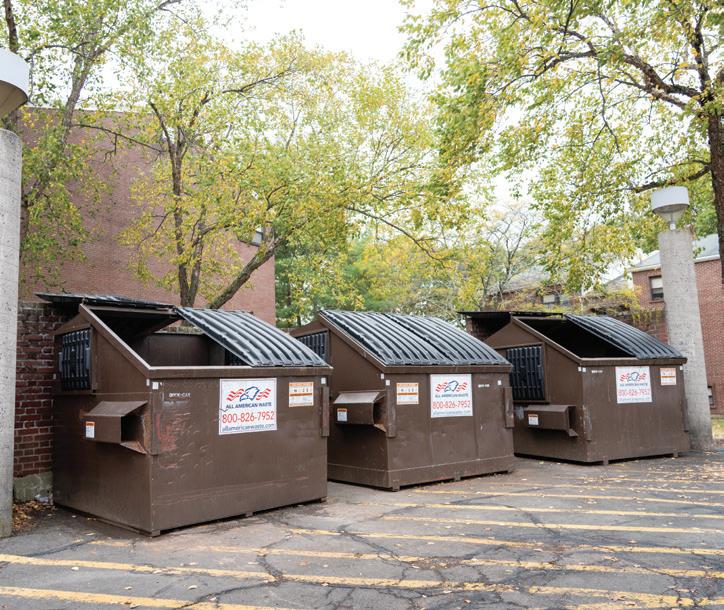
that for in the laundry room anyway.”
The recycling bins in The Village Residence halls have bottle and can lids, meaning only one bottle can go into the bin at a time. If students were aware of the recycling bin there, they would have to put their items in one by one. When it comes to dumping out their blue recycling bins, the dumpster is still the closest option.
According to the university’s STARS report, a self-reporting framework for colleges and universities to measure their sustainability performance, submitted on March 1, 2025, Quinnipiac scored a 2.75/8.00 on the Waste Minimization and Diversion category. The report claimed the university was able to divert 20.7% of waste from the landfill by recycling, composting, donating or re-selling it in 2024.
For reference, in 2018, the national recycling rate was 32%, as reported by the U.S. Environmental Protection Agency (EPA). The current national goal of the EPA is to increase this rate to 50% by 2030. While Quinnipiac’s 20.7% diversion rate is commendable, it could be higher, and it is still below the national average.
Single-stream recycling, when available, does make it easier for students to contribute to recycling. As evidenced by the struggles of the EyeRecycle program, sorting out different recyclables may lower participation levels and add an additional barrier to recycling.
However, with contamination rates as high as they are, we must confront the inefficiency that comes with our use of single-stream recycling and consider whether the ease is worth it.
CT Appellate Court hears two cases at School of Law
By AVA HIGHLAND News Editor
The Connecticut Appellate Court heard two cases at the Quinnipiac School of Law on Oct. 10 as part of their “On Circuit” program. The program allows students to hear real court cases and interact with the arguing lawyers.
The program began in 1996 and has since heard cases at over 20 high schools and colleges across the state.
“Each year, the court selects a school at which to hear arguments, with the goal of educating students about the role and responsibilities of the appellate system through this interactive and engaging real-life experience,” according to the Connecticut Appellate Court website.
In its first year, the program visited Quinnipiac, back when it was still a college. Last week was the fourth time the court visited the university.
The presiding judges, Melanie Cradle, Dawne Westbrook and Robin L. Wilson, heard one criminal and one civil case.
Cradle noted that the “On Circuit” program is “a unique educational opportunity for the students.”
In each hearing, there was 40 minutes of oral argument — 20 minutes for each side — followed by a 20-minute question and answer segment between the lawyers and students present in the courtroom. Each attorney representing the appellant also gave a brief response. The final verdict on the cases is not shared during these hearings.
The criminal case State v. Stanley Velazquez out of the Bridgeport Judicial District was heard first.
“At issue is whether information contained within the four corners of an affidavit established probable cause for issuance of a search warrant,” a press release for the hearings stated. “Another issue is whether the trial court improperly relied on evidence outside the four corners of an affidavit and made clearly erroneous factual findings.”
John Gulash, the attorney representing the appellant, Stanley Velazquez, gave his oral argument first, followed by Timothy Surgue, the assistant state’s attorney representing the appellee, State of Connecticut.
For a large part of their arguments, they looked at the language used in the warrant and determined what it meant to be “physically observed.”
“It’s not a matter of tricking an officer into using precise language,” Gulash argued.
Surgue’s argument had a strong focus on the second issue of the case and the reliability of the evidence used.
“We have an extremely compelling showing of reliability,” Surgue said.
The second was a civil case, Annette Afonso v. Isaiah Torres, out of the Waterbury Judicial District regarding a dog bite.
“At issue is whether the trial court properly found there was no genuine issue of material fact that the defendant is not the ‘keeper’ of the dog,” the press release explained. “Another issue is whether the defendant, as property owner, owed a duty of care to the plaintiff pedestrian.”
The attorney representing the appellant, Annette Afonso, was Brenden Nelligan who argued Ashely Noel, the attorney representing the appellee, Isaiah Torres.
The arguments for the case focused heavily on language, looking to determine the definitions and differences of owner and keeper in regards to the dog as well as the property the incident occurred on.
The “landowner is responsible for conditions on property,” Nelligan argued.
Noel opposed his claims.
“The plaintiff’s interpretation of the term ‘possession’ or ‘control’ is simply too narrow,” Noel said.
After their arguments, the presiding judges went into recess and the court adjourned.
During the Q&A portion of each hearing the arguing attorneys provided law students with advice for their intended career — all four noted the importance of exposing themselves to different areas of law.
“Have an open mind, expose yourself to different environments,” Surgue said.
The attorneys also shared guidance in how to approach challenging questions from judges while presenting an argument.
“You always want to take a moment to think,” Noel said. “Be frank if you don’t know the answer.”
Through both the arguments and Q&A, students studying and working to have a career in law gained insight into appellate courts as well as lessons to carry with them.
‘What’s Your Story?’ hosts ESPN's Jay Harris
By NATHAN ROJAS Staff Writer
Nick Pietruszkiewicz, professor of journalism and director of the sports communication program, featured ESPN Sportscaster Jay Harris in his talk show “What’s Your Story?,” Thursday, Oct. 9.
“What’s Your Story?” gathers journalists from around the country to discuss topics ranging from the art of storytelling to the state of journalism. Pietruszkiewicz hosts the series to give “the opportunity for students to interact with the people who do the jobs that they hope to do,” he said. This is the series’ second year.
Harris shared he became interested in journalism in the 11th grade.
“I took a career aptitude test and scored well in the area of interpersonal skills and looked at the jobs, journalist may have been the third one listed. I said, ‘That’s what I want to do,’” Harris said.
He started his career in radio, working for a
small radio station in Norfolk, Virginia. During his time there Harris filed several stories for the Sheridan Broadcasting Network — now American Urban Radio Networks — before working there as the local news anchor.
Eventually Harris found himself at ESPN in 2003. Harris declined its first two offers, not wanting to relocate his family, but also because of his lack of experience reporting for sports.
“It took me a year to realize that I didn’t have to be a sports encyclopedia… to realize that you’re doing the exact same thing you did when you were in Pittsburgh. Instead of talking about the school board, now you can talk about the Steelers and Pirates,” Harris said.
Harris does not believe that his career began with one particular moment.
“I don’t even think it’s a moment. I think it’s several moments, if you want to be honest. Because if it weren’t for different things happening…I don’t get to be here,” Harris said.
Harris did not start out as an expert. When he first started, Harris believed “it was just bad,” referring to his early work.
Over time, Harris came to realize that he was actually better than most other people around him.
“Even while I thought I was terrible, I was better than most of the other people in my class,” Harris said.
Throughout his career, Harris has learned many valuable lessons.
“One of the most important things, being a good teammate. I always tell young folks at the end of the day, don’t be a d-ck,” Harris said. “This business is small and reputations, people remember reputations.”
Another lesson Harris learned is “time management, because you can’t miss your slide.”
Additionally, Harris advised students to “just use bullet points and not try to memorize your entire stand up when going to a package,” he said.
Several students in attendance were curious about times in Harris’ career when he had failed.
“I could either spend time worrying about failing, or I could spend my time preparing and doing the best that I can,” Harris said.
Harris found that among journalists today, they’ve developed misconceptions about the field.
“You gotta learn how to write. I don’t care what kind of social media, digital age we’re in, you got to know the fundamentals of journalism to be a better journalist,” he said. Harris has also found that modern journalists focus on the wrong things, caring more about their brand.
“Those are the mistakes that I see young folks making, caring about the wrong things,” he said. For aspiring journalists, Harris advises “the more authentic you are, the more believable you are, the more trustworthy you become, the more comfortable you are, the better you are.”
Residents able to earn micro-credentials from The Grove
By MADELYN DURKEE Staff Writer
In its second year of operation, The Grove residence hall is launching a micro credential integrated with the year-long project to award students and mentors completing the program.
Micro credentials are “something that proves that (students) learned a specific skill, a specific competency,” Tan Gurpinar, assistant professor of business analytics & information systems and advisor of the living learning experiences Leadership Council, said.
On Tuesday, Oct. 21, is the official launch for the Foundations in Project Based Collaborative Research and Consulting micro credential offered to students and mentors.
“I realized the students are gaining some really valuable skills, and we are asking them to do something above and beyond what is typical for a residential experience at Quinnipiac,” Christine Voth, coordinator of academic integrity and accountability, said.
Faculty and students both expressed interest in adding to the program and recognizing students for their work in The Grove.
“We did a survey at the end of last year to see how we can improve the Grove experience for the next year, and when I talked to the students about the survey they mentioned that they would like to
have a microcredential,” Gulpinar said.
The new micro credential is a recognition of the students’ skills and effort.
The micro-credential will recognize the work students are already doing to complete the Grove’s year-long project. The official launch will discuss the additional steps students need to take and how the micro-credential ties into experiential learning.
Aadil Latif, a sophomore health science major, is looking forward to the launch and “to see what it can offer me, not only for my resume, but for me in general,” he said.
Students who complete the program will receive an online certificate which will appear on their transcript. Micro-credentials are great resume builders and may attract employers on online platforms, like LinkedIn.
“(Last year) I developed a micro credential for the Office of Academic Integrity and Accountability and seeing the process I thought; we can absolutely do something like this for The Grove,” Voth said.
The micro-credential is designed to give students a competitive edge as they continue their education and enter the field in their chosen career.
Gurpinar meets with some of the largest employers in Connecticut every few months as part
of his work with the School of Business.
“From them we know that they really look into micro credentials or other certificates that prove competency rather than just participation,” he said.
For their required year-long project, students in The Grove choose a theme and are divided into groups. It consists of research coupled with experiential learning to create a final product at the end of the year.
“(Students) work to develop topics that they’ll be researching and experiencing throughout the whole year,” Voth said. “We wrote it so that the mentors had the opportunity as well, because their work is very important and unique in its own way to what the students are doing.”
While the new micro-credential is designed for students and mentors in The Grove, other interested students have the ability to participate.
The existing Applied Research micro credential is an option for students in The Grove who go above and beyond, as well as other interested students.
“There is also room for others to join, especially for the research micro-credential, we are always open to have students join in,” Gurpinar said.
The new micro-credential will give students a unique opportunity to apply the skills they learn
while completing their chosen project.
As a student last year, Latif reflected on the skills he gained from The Grove project.
“I learned how to work in a group, I learned how to put together a poster and learned how to collect survey data,” he said. This year, he has returned to The Grove as a mentor.
Last year was the first-year students lived in The Grove. According to Latif, implementation of the program was disorganized and led to miscommunication between mentors. Additionally, many incoming students did not understand the scope of the work required.
This year, faculty and mentors knew what to expect. Students are already feeling more prepared and are on track to create well rounded final projects. Voth feels that the timing is perfect for students to take the next step and introduce the new micro-credential.
“We have lots of great students that do outstanding things, and I think it will be a great way to give something back,” Gurpinar said.
He says it is possible for the program to expand in the future.
“I hope that we will have a nice blueprint with The Grove experience, and then we can see if there is demand, and if we can roll it out to other LLC’s as well,” Gurpinar said.
Opinion
There is nothing wrong with leashing your kids
A plea from a formerly leashed child
By VIVIAN GAGE Copy Editor
Children benefit from being put on a leash when out in public. I know this not as a mother, but as a formerly leashed child; living proof that leashing works.
The word ‘leashing’ sounds strange, even comical. It leads one to instantly think of dogs, which is why many people denounce the act, calling it oppressive. The method has led to debates online, the harassment of parents and both anti-leash and pro-leash Facebook groups.
Obviously, it’s not an actual leash with a collar we are talking about here. Children aren’t dogs, even if they are just as easily distracted. The leash I’m referring to, and the one parents use, is a soft leash backpack, sometimes called a harness. Parents mostly use them for toddlers, then retire the backpack once their kid’s desire to randomly bolt has lessened. They are super cute — and as I’ll soon prove — very convenient.
Many people would disagree. One article posted on the website Your Tango claimed a leash “meant that the kid’s mom was too sadistic to put him in a stroller.” The article suggested strollers as an alternative, stating, “most of the moms online who have tested or tried child leashes…apparently have never heard of a stroller or baby carrier.”
This just makes me giggle. Obviously, every mom has heard of a stroller. Maybe, just maybe, moms who leash their kids are tired of pushing strollers, or are going somewhere a stroller won’t fit. They may just want to encourage their children
to walk on their own. Letting toddlers do so actually helps build their confidence and improve their coordination. With a leash, it’s freedom with minimal risk.
The anti-leash author said leashed children look like golden retrievers out to do their business. I suppose she thinks strollers make children look more normal.
I hate to break it to them, but in the 21st century, if you see someone walking with a stroller, there’s a good chance there’s a small shaking dog inside wearing a cute sweater, not a baby. Strollers won’t save you from the “Dog or kid?” questions.
And even if you can’t help but compare leashed kids to dogs, is that really so bad? People leash dogs to keep them safe and protect them from others, which to me sounds like a good idea for everyone.
Some moms use child leashes/harnesses because medical conditions, like arthritis, make it harder for them to run after pesky toddlers. Some are simply in postpartum recovery and don’t want to sprint with a newborn in their hands. Others have children with disabilities, such as those with autism spectrum disorder (ASD) or intellectual disability (ID), who elope often.
“I don’t laugh at kids on leashes anymore. I feel bad for them,” the anti-leash writer wrote. “... especially the kids with the monkey backpacks. Someone’s convinced them that leashes are cool.”
Ouch. She got me there.
Two-year-old me had a bright pink monkey backpack, with the leash being the monkey’s tail.
It was sparkly and I loved it. I was matching with my sister and brother, and I felt super cool. We are triplets, so we were like a little gang. In the eyes of some skeptics, I suppose that would have made my mother a dog walker, but really, she was just ahead of her time.
That is the extent of my memories about the monkey backpack — that it was pink, sparkly and made me feel like an adventurer.
or feeling like a dog. I do have two very distinct
how I could get lost in a store that flows in a clear rectangular path.
The second time, I was holding my mom’s hand at a fair, bustling with people. Being an observant young toddler, I noticed a different woman who looked more like my mom than my mother herself. Naturally, I squirmed free of my fake mother’s grasp to go towards to woman my mom.

bewildered at
Once again, I was lost because of my own devices, at no fault of my mother’s. Both times she found me, but I scared my mother, too, who feared I might join the 33 children, on average, who are kidnapped by non-family members each not the only kid who runs away. In fact, I’m not even the only one to run away at Kohl’s specifically. My running didn’t make my mom a bad mother, just like the implementation of a leash didn’t make her sadistic. It made her creative and using a leash works, keeps your kid safe and lets them feel adventurous, who is anyone to importantly, don’t you dare feel guilty about it.
Tanking in the rankings
Tyler Herro is too low in ESPN's NBA Rank 2025
By MATTHEW MARIANI Contributing Writer
With the NBA season right around the corner, ESPN released its list of the top 100 players going into the 2025-26 season.
According to ESPN, “ESPN’s NBA Rank panel, made up of more than 150 reporters, editors, producers and analysts, was asked to rank players based on their predicted contributions — quality and quantity — for the 2025-26 regular season only.”
Surely a list of the best NBA players made by 150 of the best sports journalists should be pretty accurate, right?
Well, I would have to agree — for the most part.
Denver Nuggets center Nikola Jokić was ranked as the top player going into the season, followed by the reigning MVP, Oklahoma City Thunder guard Shai Gilgeous-Alexander and then Lakers guard Luka Dončić in the No. 3 spot.
Pretty hard to mess up and I would say they did not. But what about the rest of the list? One player’s ranking that stands out to me is Miami Heat guard Tyler Herro, at No. 68.
Sixty-eight? In the 2024 season, Herro averaged a career high 23.9 points per game and 5.5 assists per game, in his first year as the first option in Miami, after forward Jimmy Butler III was traded to the Golden State Warriors. Twenty-four players were selected to play in the NBA All-Star game last season, including Herro, who got his first nod in his sixth season.
He was also chosen to shoot in the Starry 3-Point Contest, in which he won, defeating Warriors guard Buddy Hield in the final round. Herro had a great year across the board and
played in a career high 77 games.
Herro has been overlooked his entire career. The 6’5” guard was drafted 13th overall to Miami in 2019 and helped Miami get to the NBA Finals his rookie season. He would then go on to break the record for most points scored by a rookie in a conference finals game with 37 in game four against the Boston Celtics.
Even with all this success, his amazing play was credited to the NBA bubble and he was nicknamed “Bubble Boy” after not taking the leap many fans expected him to in his second season.
In his third season, Herro won the Kia Six Man of the Year award, averaging 20.7 points per game and shooting nearly 40% from behind the arc.
Herro hovered around the 20 point per game average in his third, fourth and fifth seasons, while facing injuries.
But you could see the progression, and fans saw the potential. Once Butler III was traded, and the door was open for Herro to be “the guy” in Miami, he did just that. Herro took the star leap and had a career year, leading the Heat into the playoffs in a confusing and dramafilled season.
Basically, my point is, Herro has improved consistently over his career and there doesn’t seem to be any reason he wouldn’t continue getting better in his second year as the main option.
When I saw ESPN was releasing a top 100 players list, I was excited to see where “experts” ranked the top players on my favorite team, the Miami Heat and my favorite player, Herro. I would say I have above-average “ball knowledge” and assumed Herro would be ranked in the top 30 to top 40, maybe top 50 at worst. But the 68th best player in the NBA is mind-boggling
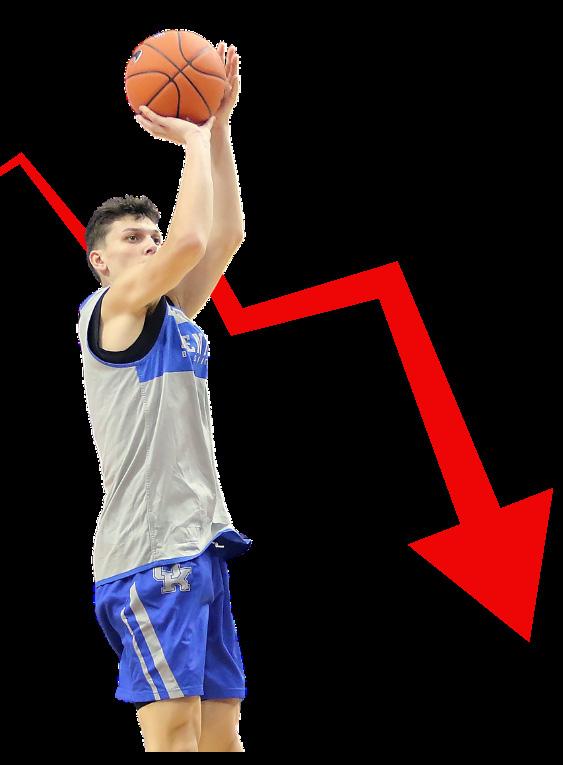
NBA guard and member of Club 520 Podcast, Jeff Teague, also disagreed they got Alex Caruso ranked higher than Tyler Herro? He was just a AllStar,” Teague said on the Club 520 Podcast on Sept. 25. “Hold on Tyler Herro was just star…and he in the 60’s bro?” yes, Oklahoma City Thunder guard Alex Caruso was a key part of the Oklahoma City Thunder’s championship run, there is no way you can argue that he will be a better overall player than Herro in 2025. Okay, he will be better defensively, but the Miami Heat without Herro is a far worse team than the
Oklahoma City Thunder without Caruso. Teague also mentioned rookie phenom forward Cooper Flagg of the Dallas Mavericks ranked 52nd. Sure, Flagg will likely be a top player in the next few seasons, but not yet. He has never played a real NBA game, how can he be ranked over an All-Star?
Other players that stand out to me are Oklahoma City Thunder guard Lu Dort (No. 64), Denver Nuggets guard Christian Braun (No. 62) and Golden State Warriors forward Draymond Green (No. 51), who I believe are not even close to Herro’s level.
Moving on to the top 50 players, I believe Herro’s skill is very close, if not better than Denver Nuggets guard Jamal Murray (No. 46), Cleveland Cavaliers guard Darius Garland (No. 38) and San Antonio Spurs guard De’Aaron Fox (No. 35). Murray averaged 21.4 points per game, shooting similar splits to Herro last season. While Garland was not Cleveland’s number one option, he averaged 20.6 points per game. Fox, while only playing 17 games last season, averaged 19.7 points per game and shot 27.4% from three.
I understand all of these rankings are speculation and prediction, but I find it hard to believe Herro won’t improve his play and become more and more comfortable as the main guy in Miami. I think it is disrespectful to place Herro so low after the season he had last year and the season I believe he will have in 2025.
The Miami Heat tip the 2025 season off on Oct. 22 against the Orlando Magic. Herro will likely be sidelined until sometime in November after having ankle surgery on Sept. 19.
Auerbach would approve of Mazzulla
By NEVE WILSON Copy Editor
The late legend Red Auerbach is largely regarded as the greatest coach in the history of the Boston Celtics, if not the entire NBA. He won nine championships and played an invaluable role in expanding the professional league at a time when people believed that college basketball was more competitive. Fifty years later, there are many similarities between him and current Celtics head coach Joe Mazzulla that I believe would earn him Auerbach’s stamp of approval.
When it comes to coaching, both men place a strong emphasis on team chemistry rather than individual player success.
Auerbach believed that character and chemistry were more important to a team than sheer talent, and that it could be the difference between winning championships or not. “They say you have to use your five best players but I found you win with the five who fit together best,” he said.
Mazzulla has also worked hard to create a strong team environment in his first few seasons with the Celtics. “He’s gotten everyone on the Boston roster to buy into his system and play some team basketball,” wrote Matt Geagan, CBS Boston Sports Producer.
Mazzulla has been praised as a “basketball genius” by starting guard Derrick White, similar to the way that people talk about Auerbach’s knowledge of the game and his crafty ideas such as the sixth man. Auerbach is credited with inventing the role of the sixth man, the player who is first to substitute in for the starters and provides a boost in energy and scoring.
“Right from the beginning, Red was an innovator, with a remarkable eye for detail. During his first season, he came up with the idea of a ‘sixth man.’ Nowadays, basketball people take the sixth man for granted, an accepted part of the game…” wrote John Feinstein in his biography “Let Me Tell You a Story,” based on his weekly lunches with Auerbach.
Today, this role continues to be a crucial part of the NBA, so much so that the league established the Sixth Man of the Year Award in 1982. It
The window to the truth Opinion
requires that a player “come off the bench in more games than he started,” according to the NBA.
Mazzulla understands the importance of coaching his players in this role. In just three seasons as head coach, two of his players have won the award: New York Knicks guard Malcolm Brogdon (2022-23) and Boston Celtics guard Payton Pritchard (2024-25). They are only the third and fourth Celtics, respectively, to win the award in its 43 years.
During games neither man is afraid to fight referees on calls, sometimes at their own expense. In his book, Feinstein describes Auerbach’s relationship with many referees as “long (and) testy.”
Following a loss to the Chicago Bulls in December 2024, Mazzulla yelled at a referee after the Celtics received three technical fouls – on Mazzulla himself, Boston Celtics guards Jaylen Brown and Jason Tatum – within the fourth quarter. I was at this game and it was tense to witness, in person, the rest of the Celt ics coaching staff having to hold Mazzulla back.
Auerbach also experi enced his fair share of fights with refs. He used to frequent ly get fined by Walter Kennedy, the commissioner of the NBA at the time. “He’d fine me for yelling at referees for getting ejected or for getting into it with fans. You name it,” he told Feinstein. He then revealed that he never actually paid the fines and Kennedy let it go.
Mazzulla didn’t get off quite as easily, being fined $35,000 by the NBA “for aggressively pursu ing and directing inappropriate lan guage toward a game official,” af
By RILEIGH LUTURS Contributing Writer
One of the best features of Quinnipiac University is its abundance of nature. Walking around campus, you see the Sleeping Giant State Park from different angles, hear the birds chirping from tree to tree, and enjoy the beautiful fountain by the Communications and Computing & Engineering building
The university was founded on Indigenous land and was named after the Quinnipiac tribe that once lived here. The name Quinnipiac means “long water land,” honoring the sacred environment. According to Native legend, the Sleeping Giant is the formidable spirit Hobbomock. Hobbomock would be angry with the university. Birds have been dying from window collisions with university buildings.
When angry, Hobbomock would stomp upon the land and change the course of the Connecticut River. When he felt disrespected, he made life challenging for people. One day, Kiehtan, another spirit, “transformed Hobbomock into the iconic Sleeping Giant, a guardian watching over the land in silent repose.”
ter the game against Chicago, according to ESPN. When asked by the press about what he said to the ref after the game, Mazzulla responded cheekily that he was just wishing them happy holidays. Auerbach would have found that hilarious since he was known for his sarcastic sense of humor. Mazzulla is often mentioned in the media for the strange answers he gives at press conferences. When asked if he felt pressure for the team to succeed, he deadpanned, “We’re either gonna win or we’re not, and 40 years from now, none of you are invited to my funeral and that’s it.”
Auerbach did not care for the media’s opinion of him either. During his first season as head coach he received a lot of pushback for not taking Bob Cousy with the first overall pick. “I wasn’t interested in making the press happy – I had a ball club to build.” Cousy ended up on the team anyways and went on have his jersey retired in Boston and got inducted into the Hall of Fame.

Another trait that the two coaches share is their status as
Auerbach established the Celtics dynasty that continues to prosper today as the team has the most championships in the NBA: 18. The Celtics made the playoffs in each of the 16 seasons he was head coach and went all the way nine times. The team won an additional seven championships while he was president/general manager. So if you’re keeping track, Auerbach has been a part of 15 of the Celt-
In 2024, in just his second season as head coach, Mazzulla led the Celtics to their first champion-
Saving Quinnipiac's birds
This past August, the university opened two new buildings, The SITE and the School of Business. They are a great addition to the campus. People are in and out, either studying, eating at the new cafe or going to class.
I myself love the views and study there with my friends all the time. But with these new buildings come new dangers for wildlife. Birds are suffering from The SITE and SOB windows. More than once, I have seen birds die from window
collisions. Spiritually, birds are seen as winged messengers in Native American culture. A few weeks ago, during Primary Recruitment, my sorority Gamma Phi Beta, was taking pictures on the South Quad when a turkey flew into one of SITE’s massive reflective windows and died. I saw the disturbing incident. It was sad to see campus wildlife drop to the ground because of the new man-made building.
While I was in the SOB, a woodpecker flew
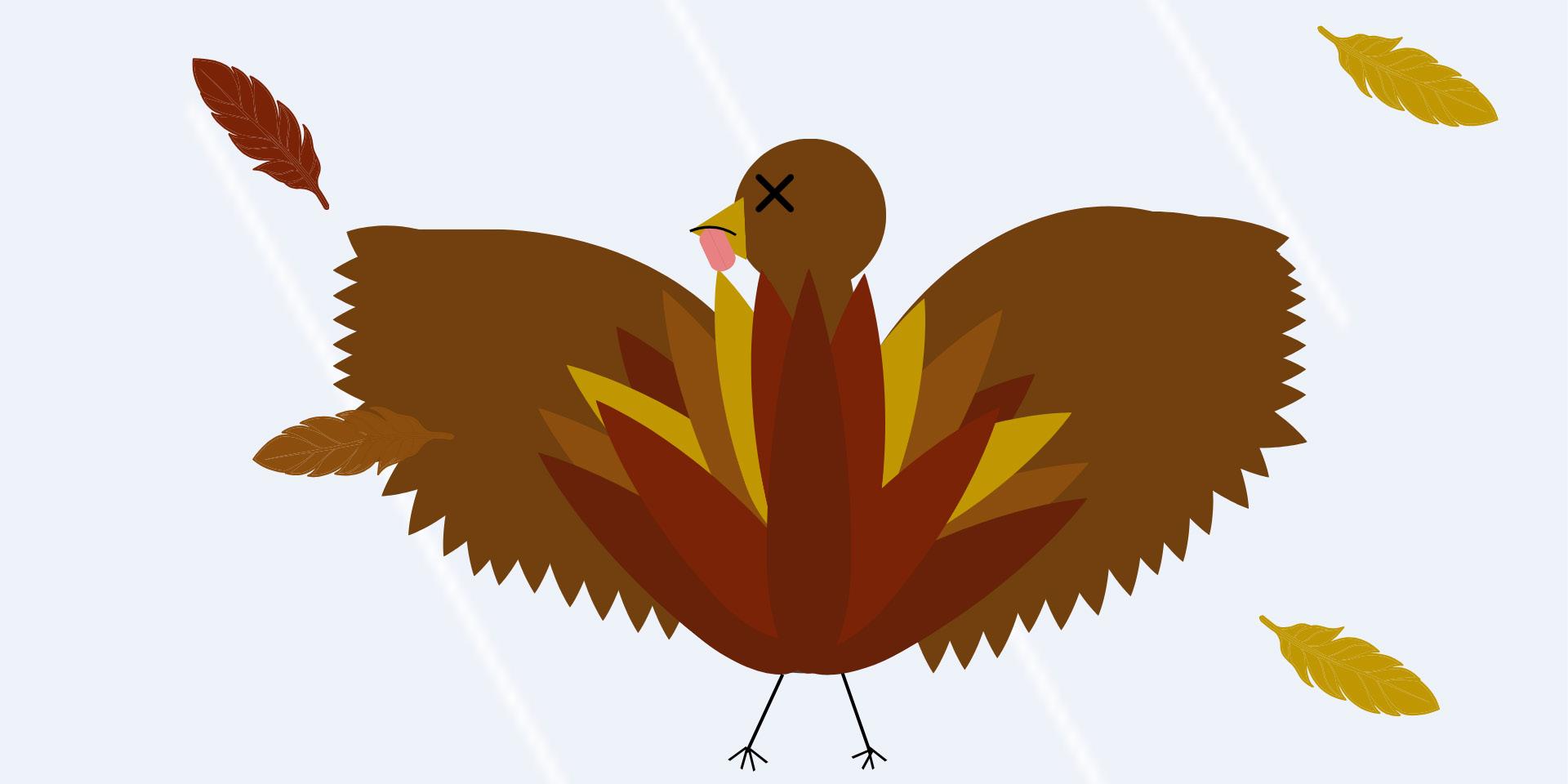
ship since 2008 and cemented himself as part of Celtics history. In 2025, it was looking like the Celtics would repeat their success and begin a championship winning streak like when Auerbach was at the helm, until Tatum ruptured his Achilles tendon during the Eastern Conference semifinals.
While both coaches love to win, neither concern themselves with the prestige or accolades that come with it. Despite all of Auerbach’s success, he never let it give him a big ego, always attributing wins to his players and other members of the organization, not just himself.
When asked by a reporter for a “favorite Joe Mazzulla quote,” White told the story of how he complimented Mazzulla for winning Eastern Conference Coach of the Month in March 2024, and Mazzulla responded dismissively, “Nobody cares.” Mazzulla was more focused on the team’s success than frivolous individual recognition.
When the Celtics won the NBA Championship later that summer, White wore a T-shirt bearing the quote to the championship parade in Boston.
So, what would Mazzulla think of this comparison? He would probably be flattered. He has been outspoken about his admiration for Auerbach and credits the man for bringing Boston sports into his life when he attended the Red Auerbach Basketball Camp as a kid. “Coach Auerbach would talk to the team and so I just fell in love with it,” he shared on the Games with Names podcast. “I fell in love with Red Auerbach first, then the Celtics.”
Although Auerbach died in 2006, Mazzulla paid homage to him by wearing a T-shirt with a picture of him and fellow C’s legend Bill Russell on it. He also quoted Auerbach before the 2024 championship banner-raising ceremony at TD Garden, restating that “the Celtics are a way of life.”
As the new NBA season begins on Oct. 21, we will see how Mazzulla and the Celtics perform amidst injuries and key offseason trades and if they can continue to emulate Auerbach and what he did best: win.
straight into the window and died. It died on the balcony facing the Quinnipiac River. Birds cannot see glass. They can’t identify it as a solid object and get confused with reflections. Yet, the two new buildings have gigantic glass windows and balconies.
Don’t get me wrong, the windows are a lovely addition that gives staff and students a view of our beloved campus, but it’s dangerous for birds.
Luckily, there is a solution! As author Kaitlyn Parkins of American Bird Conservancy (ABC) says, “The good news is, people can help.”
“For existing buildings and homes, the easiest fix is to add inexpensive, commercially available bird-safe window treatments….” she explained. One example of a bird-safe window installation company is Feather Friendly. Recommended by ABC and shown to reduce bird-glass collisions by 95%, Feather Friendly can help QU.
We need to protect the birds. With a simple installation, Quinnipiac can save the lives of many birds we all love to hear on campus. To keep Hobbomock at rest, windows need to become bird-safe.
Arts & Life
Professor of kindness: An interview with Chester
By RILEIGH LUTRUS Contributing Writer
When you walk into The Bobcat Den, better known by the students as “the Rat,” the first smiling face you see is Chester.
Standing behind the cash register, the jolliest man at Quinnipiac is ready to check out your purchases. Beloved by many, Chester is one of Quinnipiac’s campus celebrities. During an interview with The Chronicle, he started with a joke. When asked his age, Chester responded, “My age, the real one? Okay 59.” Always a light spirit with a sense of humor.
Chester Jones, a food service employee at Quinnipiac, has worked here for almost 19 years. As the students like to say, he is “the professor of food.” Over the years, he has worked in the Café Q on the Mount Carmel Campus, on York Hill, and presently at The Rat. As he says, “The Rat is my home.”
Time and time again, Chester would mention his love for the students and coworkers at “the Rat.”
“All my co-workers and all the students are just top-notch; the best,” Chester said. “You know, they treat me the way I treat them, and that's a pretty good feeling.”
Growing up, Chester moved frequently while his father went from job to job. He lived in Florida, Waterbury and Derby, Connecticut. In Florida, his family of eight lived in a double-wide trailer park. Later, his family grew to become a total of 11 people.
As a pastime, he liked to go fishing with friends. At night, when the ground was moist, they would grab night crawlers — also known as earthworms — and use them to fish. Chester explained that not having a lot of money meant fishing was one of their only pastimes.
While in Derby, Connecticut, Chester met his wife, Cindy. They first met through Chester’s older brother, who used to date Cindy. But then they worked together making the heavy metal magazine, Hit Parader, at Charton Press. The two would go out after work and eventually fall in love.
At age 22, Chester and Cindy, then 28, tied the knot. They decided on marriage because they were happy, and it helped save money with insurance.
But as Chester likes to joke, “One day I picked up Cindy for a date and her mother was standing on the porch with a shotgun and said, ‘Haha, you were late, you know what else was late?’” indicating they had a shotgun wedding.
Chester and Cindy never had children of their own. Instead, they would help babysit their nieces and nephews and later their nieces and nephews' children. Chester spoke fondly of his whole family and loves watching them raise their own families. Most of his family lives in Florida, but he tries to see those who live in Connecticut as much as he can. He says, “They're so grown, and you watch them by kicking back and watching them take care of their families, like you used to do, and it's a pretty amazing feeling.”
They did, however, have cats at one point. One was named Tramp and the other

Zoe. They loved their pets and suffered a great deal when they passed. When asked if he would get another cat, Chester said, “It hurts so much when you lose an animal that we just didn't want to do it anymore.”
Working at Charton Press, his wife and his wife’s cousin’s husband were his bosses.
Chester said, “He was my boss, my friend, my tax guy, he was like a father to me, you know, after my dad had passed.” Chester enjoyed working at the magazine company, but had to leave when they started to close in 2007. Losing his job is what led him to apply to Quinnipiac.
As Chester puts it, “I love it here (at Quinnipiac), this is where I belong.” He loves working on campus and believes it's where he is meant to be. “I'm glad to be here, and I thank God every day. I mean, I'm not a praying man, but I say he's the reason why I'm here, Cindy's the reason why I'm here, you folks are the reason why I'm here.”
Chester really loves Quinnipiac, “because I love everybody and it’s just the most amazing place on Earth, seriously, great.”
Chester's goal here is to make us students happy. “I get up every day and I say, ‘how
can I make their day today?’ Just be yourself, that's all you need.” According to him, his job is to make us happy. “That's what I came here to do, if I can give somebody a smile or a nice word, you know, if it makes their day, my job is done.”
All Chester wants is to give us a smile.
“If you see someone without a smile, give them yours,” he advises.
Chester is very admirable, especially through hardship. Sadly, in June 2024, Cindy passed away. Even sick, “...she still got up every day and tried to do something in the house.” They were married for almost 35 years. Chester said that it was difficult losing his wife. He said, “It wasn't always perfect, but that’s what marriage is, and we just took really good care of each other. We didn't have much, but we had each other.”
When asked if he would ever get another pet as a companion, he said his wife always wanted a puppy, but doesn’t think it would be a good idea. “It's not fair to the dog because I would be working all day. The dog needs attention. The dog needs to be walked, you know. I'm in and out, that's a real handful, and you gotta take care of him,” he said.
“You gotta get him to the vet because they're just as important to you as we are.”
Chester says students contribute to his happiness and uplift him.
“You know, I miss my wife sometimes, but like I said, I come to work and I have all you fine folks. You make me feel like I can't do anything wrong.” Chester even joked that we students keep his blood pressure low.
As Chester says, “You've got to give a little to get a little.” Being kind is the best thing you can do for others. Even if you don’t like someone, it’s important to be compassionate. Chester says, “People just need to learn to leave people alone, and if you don't like somebody, leave them alone. But if you do treat them like you want to be treated, nine times out of ten you can't go wrong.”
Chester’s joy in life and love for others are why he is so popular on campus. His positivity and the energy he is putting into the world are what make him so great. Chester is unknowingly teaching us how we should interact with others. He isn’t just the professor of food; he is the professor of kindness. And lucky for us, “I'm not going anywhere, not unless they get rid of me!”
‘Gilmore Girls’ celebrates 25 years of fall tradition
By AVA HIGHLAND News Editor
As the leaves are changing and the weather is cooling down, it’s officially “‘Gilmore Girls’ season” — a tradition that finally reached its 25th year. The heartfelt comedy drama first aired back in October 2000 and the cast has been back in the spotlight even more than usual in light of the anniversary.
The show follows the mother-daughter/best friend duo of Lorelai (Lauren Graham) and Rory Gilmore (Alexis Bledel) in the fictional small town Stars Hollow, Connecticut — a place we all wish we could live. After the series finale in 2007, almost the entire main cast returned for the four-part series “Gilmore Girls: A Year in The Life” in 2016.
For myself, “Gilmore Girls” is a year-round watch, but its most iconic time is when autumn rolls around every year — especially with Richard Gilmore’s (Edward Herrman) iconic “I am an Autumn” line.
More than just the fandom have acknowledged the hold the show has on fall.
To celebrate the show’s anniversary, Graham and Bledel reunited on the stage of the 2025 Emmy Awards. They stood on the steps of their Stars Hollow home to present the award for Outstanding Writing for a Comedy Series award and reminisced on their days as the Gilmore girls.
“Twenty-five years ago, a show called ‘Gilmore Girls’ premiered and, apparently, took the season of fall hostage,” Graham said.
Bledel continued the sentiment, also noting how small the show was before it grew into such a staple.
“In spite of our autumnal dominance, ‘Gilmore’ was actually a very small show,” Bledel said.
Graham was also honored with a star on the Hollywood Walk of Fame on Oct. 3, joining
2,822 other celebrities. Alongside Graham was “Gilmore Girls” creator Amy-Sherman Palladino and several of her former castmates, who are still friends today.
And now, while fans have hoped for a reboot since being left on a cliffhanger in “Gilmore Girls: A Year in the Life,” they are getting to see their favorite characters once again in the upcoming documentary “Searching For Stars Hollow.”
While many of the former cast members have returned to take part, several of the show’s stars are not confirmed as interviewees. That includes “Alexis Bledel, Lauren Graham, Melissa McCarthy, Scott Patterson, Milo Ventimgilia, Yanic Truesdale, Matt Czuchry, Liza Weil, Sean Gunn, and Amy Sherman-Palladino,” according to tvinsider.
So far, fans have gotten sneak peeks into the interviews with cast members, discussing the impact of “Gilmore Girls” and reminiscing on their days in Star Hollow. And while the documentary is still underway, fans anticipate the release and hope their favorite characters will make a return.
It’s been over two decades since it aired, yet the love and devotion from the fandom never ceases.
So what makes it so iconic?
As the show encompasses fall, it’s inspired its own aesthetic — especially with things like fashion choices. Every year fans shop for Rory’s iconic white sweater from the pilot episode or try to emulate Lorelai’s chic work outfits.
Aside from style choices, the show inspires fans during their everyday life — like in high school when I was dressed in a fall outfit while studying and my friend said, “so Rory Gilmore of you.”
I could be biased in telling you how good the show is, but it’s no secret how popular it still is. I first watched the show in 2020 and quite literally haven’t stopped since. If Netflix created its own
version of Spotify Wrapped, “Gilmore Girls” would take over mine in every category.
Speaking of music, one of the most stand out parts of the show is its soundtrack. The show plays iconic hits of its time — like when the pilot episode opens with “There She
Goes” by The La’s and, of course, the theme song “Where You Lead” by Carol King, who even joins the permanent cast.
Even Spotify themselves shared some of the many “Gilmore Girls” inspired playlists in a post on Instagram, calling it “The Gilmore Girls Effect.”
“Each year searches for ‘Gilmore Girls’ on Spotify increase 140% on average,” according to Spotify.
But what really sticks out is the characters and their relationships with each other. Of course we all know and love the dynamic duo of Lorelai and Rory, who are “best friends first, mother and daughter second.” The show also has a large group of characters we get to follow throughout the whole series, each with something unique about them.
There’s a character for everyone. Any viewer can find someone in the show they relate to or something about a character they admire. Whether it be Rory’s academic focus, Paris’s (Liza Weil) drive, Lorelai’s wit, Michel Gerard’s (Yanic Truesdale) sarcasm or Luke Dane’s (Scott Patterson) passion — with such a large cast I
By SOPHIE MURRAY Staff Writer
I have always loved jewelry and see it as a powerful part of self-expression.
When I was younger, I would shop at stores like Claire’s and Justice with my mom, excited to buy those tacky clip-on earrings, charm bracelets and necklaces that inevitably turned your skin green.
When I was nine years old, I was finally allowed to get my ears pierced and from that moment on my love for jewelry of all kinds grew.
Jewelry was not cheap though, so most of my earlier pieces were silver because it was the most affordable. As I got older and started spending my own money, I began experimenting with different styles and metals, trying to figure out what really suited me.
At first, I had no idea what actually complimented my features. I learned there’s a general guideline: people with darker hair or warmer skin tones tend to look best in gold, while those with lighter hair and cooler complexions often suit silver.
But, of course, it is not that simple. Everyone’s unique combination of undertones, style and personality plays a big role in what looks best on them. This is a simple guide of how to find the jewelry metal that will compliment you the best.
If you are completely lost, the best way to start is to determine if you are warm or cool toned. To do so, under natural light, look at your veins to see if they are clearly blue or teal. If your veins are blue, you are cool toned meaning skin has pink or bluish undertones. If your veins are teal, you have a warmer skin tone and you most likely have golden or peachy undertones.
Now that you have determined if you are
warm or cool toned, you can explore even deeper into your tones.
Start off with skin color.
For those with fair skin, stick to plain silver or white gold jewelry since it looks really fresh on pale skin. Avoid any gold or rose gold metals because it will bring out the pink in your face and can cause your complexion to look pasty.
If you are someone who is lightly tanned or has olive skin, almost all metals look flattering on your complexion. Since olive skin has undertones

truly could go on and on.
We see countless different dynamics within the cast that are hard to not love, like Emily (Kelly Bishop) and Richard, but also the ones we wish we had more of, like Paris and Jess Mariano (Milo Ventimiglia).
The show follows the characters through the ups and downs of school, romance, friendships and family — making it relatable and comforting.
And though the show ended almost 20 years ago, everlasting debates still keep conversations buzzing. For instance, the debate of who Rory’s best boyfriend was will forever live on, or all the ‘what ifs’ like what would have happened if Lane Kim (Keiko Agena) and Dave Rygalski (Adam Brody) didn’t have to split.
We all have our go-to rewatch, but arguably “Gilmore Girls” takes the comfort show to another level. So us “Gilmore Girls” enthusiasts can only hope for there to one day be a revival of the show, but for now we put on our fall sweaters, sip our hot coffee and go back to Stars Hollow yet again.
How to choose the best jewelry color for you
of yellow and green, it creates a versatile canvas for all metals. Warm metals like gold and rose gold will harmonize with the skin's natural tones, while cool metals like silver will produce a very natural looking contrast.
On darker skin tones, gold is the way to go. It really comes through naturally against darker skin tones and will make you look more luminous. While silver is not completely off the table, it can get a little lost, especially if you are wearing a really delicate piece.

If you want to go even further, consider hair and eye color as well.
For blond hair, go for a light toned metal. A silver is always best to stick to, or a very soft gold. If you want to add in gemstones, go for an aquamarine, morganite or a pearl since they maintain a subtle, graceful look and bring out the shine in blond hair.
As for brunettes, darker hair creates a strong contrast that helps jewelry stand out, so explore bold golds and bronzes. Deep colored gems like sapphire, emerald and ruby look especially vibrant against brown hair.
If you have red hair, stick to warm and earthy tones like copper, rose gold and yellow gold. These harmonize really well with the warmth in red hair. For gems, consider earthy greens like peridot or a deep blue like lapis lazuli. These give a great contrast and bring the vibrant tones of red hair to life.
Working off of your eye color can also help decide which metals suit you best.
For brown and green eyes, yellow gold or a rose gold will contrast really nicely beside your eyes.
For blue eyes, silver and white gold are great choices because they create a striking contrast, making your eyes appear more vibrant.
And for hazel eyes, both gold and silver work very well. Gold jewelry will highlight the golden flecks in hazel eyes, while silver can create a contrast against the eye.
Harmonizing your jewelry metal to your physical features does not have to be daunting. With this guideline and simple steps, you will easily be able to figure out what works best for you in order to really highlight and bring out your natural features.
NHL opens 2025-26 season, full of centennial celebrations, new talent and farewells
By CLAIRE FRANKLAND Sports Editor
The National Hockey League opened up its 2025-26 season on Oct. 7 with the back-to-back Stanley Cup Champions, the Florida Panthers, raising its 2025 Stanley Cup Banner to the rafters of Amerant Bank Arena.
While the Panthers look to three-peat this season and claim the franchise's third Stanley Cup, the other 31 teams gear up to battle for the same prize.
As the season gets underway, let's highlight some of the important events, players and key parts of the game to look out for in the 202526 season.
CENTENNIAL CELEBRATION
T his season is extremely special for three teams in the league, which make up the original six. The original six made up the NHL from 1942 until the league expanded to 12 teams in 1967, according to ESPN.
These original six franchises are the Montreal Canadiens, Chicago Blackhawks, Boston Bruins, New York Rangers, Detroit Red Wings and Toronto Maple Leafs.
In particular, the Rangers, Red Wings and Blackhawks will be celebrating their 100th season, with the Canadiens having celebrated theirs during the 2008-09 season, the Maple Leafs celebrating in the 201617 season and the Bruins in the 2023-24 season, with the celebrations continuing into the 2024-25 season.
To honor the milestone, each team released its centennial jerseys, throwing it back to the origins of the team in patchwork, color and style.
The Rangers wore its new threads on opening night and will wear them nine more times throughout the season on special nights. The Red Wings’ new jerseys feature the classic number font, which is a nod to the Cougars’ “Barber Pole” uniforms, worn in 192728, according to the NHL website. And the Blackhawks are no different, introducing its centennial jersey featuring a vintage lace-up collar and a centennial shoulder patch.
NEW TALENT HITS THE ICE
Opening up a new season means all new talent laces up the skates and hits the ice.
With the No. 1 draft pick in the 2025 NHL Draft, the New York Islanders selected defenseman Matthew Schaefer. Schaefer played two seasons in the Ontario Hockey League, ending last season with seven goals and 15 assists for 22 points in 17 games, according to his Elite Prospects.
The Hamilton, Ontario native is just 18 years old, and certainly does not look his age out on the ice, even at the professional level. In his NHL debut, Schaefer tallied his first point on an assist and scored his first goal against the Washington Capitals during his first game on Islanders ice.
His speed on the back check and hockey sense are crucial for a previously struggling Islanders squad, with even his first goal coming off of tricky poke-in-play, rushing hard from the point.
With just two NHL games under his belt, at the time of publication, he has set the record as the youngest player in history to play more than 25 minutes, according to a post on Bardown's Instagram. This astonishing record was previously held by Penguins forward captain Sidney Crosby.
Moving up to Montreal, right winger Ivan Demidov is the man to look out for on the Montreal Canadiens this season. Demidov was drafted fifth overall in the 2024 NHL Draft.
However, Demidov only appeared in two games last season, predominantly playing for the SKA St. Petersburg, in the Kontinental Hockey League, where he recorded 19 goals and 30 assists in 65 games, according to his Elite Prospects.
As of publication, the Sergiyev Posad, Russia native has recorded one assist for the Habs, in its 5-1 win over the Detroit Red Wings.
Demidov’s skill has been on full display already, using his speed to create time and space for his linemates. In addition to his speed, Demidov’s got hands, with great stick-handling ability, a dangerous combination as seen in athletes like Edmonton Oilers center Connor McDavid.
BLAST FROM THE PAST
With all the new top-tier talent pouring in
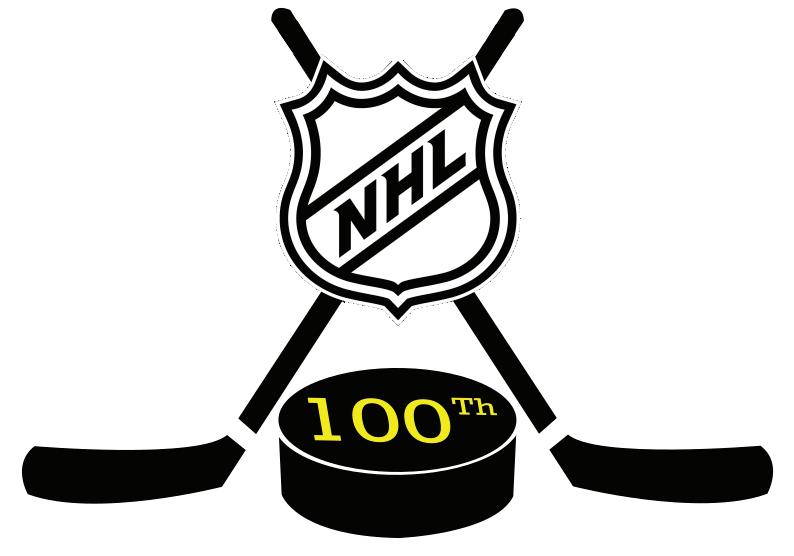
this season, we certainly cannot forget about the talent from the early 2000s, many of whom are coming up on the end of their professional career.
Goaltender Marc-André Fleury officially announced that he would be retiring after the Minnesota Wild were eliminated in the playoffs last season, according to TSN.
Fleury was drafted first overall by the Pittsburgh Penguins in 2003, where he would go on to win three Stanley Cups, playing 21 seasons in the NHL. During his professional career, Fleury played for the Penguins, Las Vegas Golden Knights, Chicago Blackhawks and Minnesota Wild. Throughout his career, Fleury appeared in 1051 games with 575 wins and a .912 save percentage, according to the NHL website.
Despite retiring after the 2024-25 season, the Sorel, Quebec native signed a Professional Tryout Contract with the Penguins, appearing in one more exhibition game with the team he was originally drafted by.
Starting his 21st season in the NHL, Washington Capitals left-winger Alexander Ovechkin looks to extend his all-time goal record this year.
The Moscow, Russia native was the first overall
pick in the 2004 draft, being selected by the Washington Capitals. He has 1,493 games under his belt, and 897 goals, shattering NHL legend Wayne Gretzky’s all-time NHL goal record last season. At the age of 40, Ovechkin is only three goals away from being the first athlete in NHL history to reach 900 goals.
With Ovechkin's contract ending at the end of the 2025-26 season, many speculate his dominant run may be up soon in the professional league. Last season, he suffered a fractured left fibula, missing 16 games, according to Yahoo Sports. Pittsburgh has a lot of history this season for its long-time athletes. This season marks the 20th season of the longest-tenured trio of teammates in North American professional sports, with Crosby, center Evgeni Malkin and defenseman Kris Letang. This trio has won three Stanley Cups together for the Pittsburgh Penguins: in 2009, back-to-back Cups in 2016 and 2017, and has also totaled 3,812 points throughout their careers.
With loads of history this season and new talent emerging, fans from all 32 teams better buckle up for this NHL season and expect it to be like no other.
Music's complicated relationship with AI
Artificial Intelligence began to rise to fame in late 2022 with the popularization of OpenAI’s ChatGPT. Since then, AI has become a more integral part of our everyday life.
With that rise, however, came a fear of what power AI held. An industry that feared AI’s power more than anyone, is the music industry.
Now three years since its popularization, it’s starting to rear its ugly head.
The line between creativity and code is beginning to get blurred as AI becomes more involved in the songwriting process. Some see this as a dawn of a new creative era while others are afraid that it is the degradation of what makes music human.
Now to ask the question, how did we get here?
AI has opened a door that’s been locked for several years for rising independent artists. It has allowed for people to access songwriting and producing styles that they never would have in the past. They can do this through programs like Suno, a software that allows for users to generate a song completely from AI using a text prompt.
Hybrid models, which fuse human aspects with artificial ones, are also proving to be successful. Research projects like Amuse explore how inputting text, images and audio can inspire chords and melodies, helping brainstorming artists overcome creative blocks.

However none of this comes without critics. Several of the harsher critics say that artificial intelligence projects lack emotional depth and authenticity that human expression brings. Kelley Jones of the Stereophonics said “art should come from the people.”
Peter Hook of the bands “New Order” and “Joy Division” has gone on record saying that every song made by AI has been and always will be “shit.”
Not to mention the legal uncertainty. Who owns an AI-generated voice? If an AI model was trained using existing music without permission, is that infringement? These questions are being asked in courts as we speak.
musician
as well as the firms
Entertainment Law and Lovey + Lovey have filed a class action lawsuit against Suno and other generative AI company Udio. They allege that they scraped tens of millions of publicly available recordings from independent artists without their consent to train their AI algorithm.
Suno and Udio have responded to the suits, alleging that their use of copyrighted material falls under “fair use” and have filed a motion to dismiss in court arguing that the music generated by its platform does not contain samples of existing recordings.
This is just one example of the myriad of
legal issues that have arisen from this kind of technology. It begs the question. “Is it worth it to use technology that creates more problems than it solves?”
Platforms are already seeing an influx of content called “AI-Slop” which are low effort tracks that ride on the novelty of AI rather than pure artistic talent. Streaming platforms like Spotify have made progress in regulating it, reportedly removing large numbers of AI tracks that violate that same infringement companies like Suno and Udio are being sued for.
All of this has led to growing pressure for regulations. Laws like the ELVIS Act in Tennessee are early steps toward defining artists’ control over their voices and likenesses when AI is involved.
Artificial Intelligence in music is no longer just a possibility, but a certainty. Yet despite this, its role is uncertain. Will it produce a net positive or net negative? The answer may not be as black and white as you may think.
Music has always adapted to new tools. Synthesizers, sampling, digital audio workstations, all of it the industry has survived and adapted through. Each time it evolves, the same question comes up: “What makes art, art?”
In this age, It’s not just about what music sounds like. It’s about who makes it, and how they choose to do so.
Malik Nabers' ACL injury brings MetLife back in the spotlight as turf debate rages on
By ANTHONY ANGELILLO Staff Writer
MetLife Stadium, home of the New York Giants and New York Jets, has become the center of attention once again over the NFL’s growing debate between artificial turf and natural grass.
As more star players suffer major injuries on turf fields, critics argue that the playing surface is unsafe, while league officials argue that the data does not clearly prove the turf is more dangerous than grass.
Recently, the Giants receiver Malik Nabers suffered a torn ACL in Week four of the 2025 season.
This is not only a major blow to the Giants organization, but as someone who has been a Giants fan his whole life, it is just another major injury to happen at MetLife. Many fans are furious over the lack of changes for players safety, as this reignites the question of whether MetLife Stadium increases the risk of injury.
NFL players, health and safety rank MetLife ninth best for lower extremity injuries and even safest for visiting teams according to injury data collected by NFL Executive VP overseeing Player Health and Safety Jeff Miller and NFL Chief Medical Officer Dr. Allen Sills, which shows how complicated this story remains.
The building has used artificial turf since it opened in 2010, and venue operators have updated that surface as criticism built.
Stadium leadership installed a FieldTurf Core system before the 2023 season, a multilayer product that FieldTurf and the stadium pitched as a safer, more forgiving option after several highprofile injuries.
Giants co-owner John Mara also said he wanted
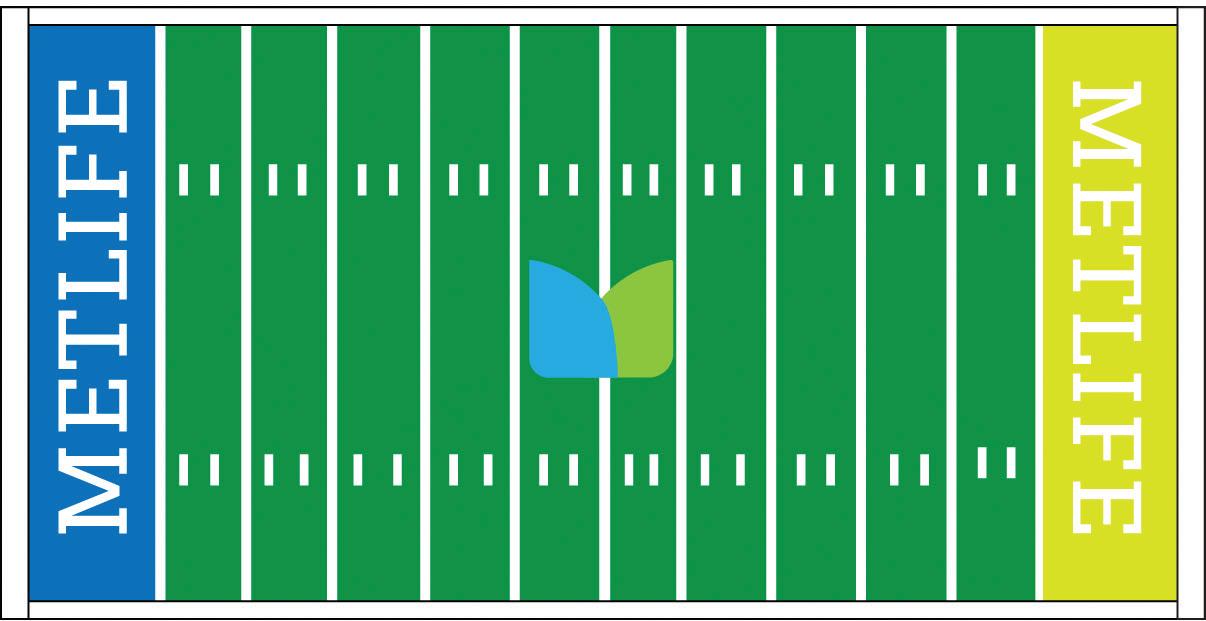
a path to grass one day, but he noted the challenges of two NFL tenants and a heavy events calendar.
The injury log at MetLife contains marquee names and flashpoint days. In 2020, San Francisco lost Nick Bosa and Solomon Thomas to ACL tears on the same afternoon and complained about a sticky feel underfoot.
In 2022, Giants receiver Sterling Shepard went down with a non-contact ACL tear during Monday Night Football.
Quarterback Aaron Rodgers tore his left Achilles tendon four snaps into his Jets debut in 2023 and Miami edge rusher Jaelan Phillips did the same that fall. Odell Beckham Jr. fractured his ankle there in 2017.
These players are just a few of the most wellknown to face injuries. In total, there have been 16 major injuries on MetLife’s turf, and that number seems to be rising every couple of weeks.
A number of Players and Coaches have called
out the NFL and the way the turf has not only hurt the team but changed how they play the game.
Kyle Shanahan said his 49ers talked during that 2020 game about how sticky the turf felt.
After Rodgers went down, Jets receiver Randall Cobb said the league prioritizes profit over people. He pushed for grass, sentiments many veterans echoed.
After Naber’s injury, Beckham urged the NFL to replace the turf and said the venue which fans call DeathLife has taken too many talented players away from the game.
Independent and union data add context. An NBC News analysis using Sports Info Solutions counted more injuries at synthetic venues from 2017 through 2022 and found seven of the 10 highest total injury stadiums used turf.
NFLPA president JC Tretter has cited league injury logs from 2012 to 2018 that show a 28%higher rate of noncontact lower extremity
injuries on turf, including 32%higher noncontact knee injuries and 69% higher noncontact foot or ankle injuries compared with grass.
However, NFL officials have published numbers that point in another direction.
A 2024 review found noncontact lower extremity injury rates in 2023 were nearly identical per 100 plays on synthetic and natural surfaces, 0.043 on turf versus 0.042 on grass.
The NFL has also said teams should improve all surfaces instead of treating grass as a silver bullet and the league highlighted fewer ACL tears overall in 2023 compared with prior years.
Comparisons across venues keep the conversation moving.
A BetMGM analysis of the past five seasons ranked State Farm Stadium as the most injuryprone and placed MetLife close behind in average injuries per game, while NBC News placed many turf venues near the top of its stadium injury counts.
Soccer tournaments have intensified the issue.
Organizers laid natural grass at MetLife for the 2025 FIFA Club World Cup and will do so again for the 2026 World Cup, which led the NFL players union to point out how easily the venue can host grass when global soccer requires it.
For now, the turf stays. Recent reports say the Giants, Jets and the stadiums operating group have no plans to switch to grass, even after Naber's injury.
This means that players will continue to advocate for natural grass at MetLife and other stadiums in the NFL. However, with funding and options scattered everywhere across the league, this battle likely extends into another season.
Charlie Sheen's rise, ruin and redemption told without a safety net
By ANTHONY ANGELILLO Staff Writer
Netflix released “aka Charlie Sheen” on Sept. 10, a two-part documentary that tracks the actor’s rise, many falls and a sober rebuild that he says now defines his life.
Director Andrew Renzi shapes the story through new interviews, archival footage and a look at fame under the bright lights. This brings a darker shadow to Sheen’s past issues and Renzi leans into that premise.
As someone who grew up loving “Two and a Half Men,” this documentary had a unique impact on me. I always saw Charlie Sheen as the ultimate sitcom star, the guy who made me laugh. Seeing him open up about his own personal demons changed that image in ways I did not expect.
Renzi assembles Sheens’s ex-wife Denise Richards, former partner Brooke Mueller, longtime friends Sean Penn and Chris Tucker and “Two and a Half Men” co-star Jon Cryer.
Renzi also sits down with Marco, a dealer who knew Sheen during the worst years. Sheen’s father Martin Sheen and brother, Emilio Estevez, do not appear by choice, a decision Renzi and Sheen both explain as support for Charlie’s wish to tell his own story without putting his family back through old pain.
Sheen speaks on camera with a level of detail that he once kept private.
“The stuff that I plan on sharing, I had made a sacred vow years ago to only reveal to a therapist,” Sheen said.
Renzi said he spent months building trust before the cameras rolled so the conversations could go deeper than headlines.
For years, I thought Sheen’s public meltdowns were just part of his wild persona. Now, it feels
like those moments were cries for help that most of us, myself included, laughed off.
The documentary spends time on the cost of shame and the pull of spectacle, and Sheen does not dodge any of it.
“Shame is suffocating,” Sheen says, a moment where the film lets a simple idea sit without cutaways.
Early in the film, Sheen recalls a drunken honeymoon flight in the 1990s that ended with a starstruck cockpit inviting him forward.
“I am there drunk, with close to 300 people asleep behind me, an angry bride 20 feet behind me, and I start guiding this plane,” he says, before crediting a quick-thinking copilot with switching on autopilot.
This was a wild story to hear from Sheen, especially when paired with a clear admission that danger sat close by.
The film revisits a 1990 intervention that recalls a surprise call from actor Clint Eastwood that pushed him toward rehab.
“He said something to the effect of, ‘You gotta get the train back on the tracks. Kid, you are worth saving’,” Sheen recalled.
Family and friends, including Emilio Estevez and Rob Lowe, surround him, showing how far his circle went to reach him.
I never imagined Eastwood being the voice that helped pull Sheen back. It made me realize how many people cared about him when the rest of us were watching.
Renzi does not reduce the story to addiction alone. Sheen talks for the first time on camera about sex with men during drug-fueled years, and he frames it as liberation rather than scandal.
The film situates those chapters in a fourdecade career. It tracks early breaks in Sheen's
films, such as “Platoon” and “Wall Street,” then jumps to record television paydays and the meltdown that led to his 2011 firing from “Two and a Half Men.”
It also notes a later reconciliation with creator Chuck Lorre and a 2023 appearance in Bookie, illustrating how relationships can mend when the work changes.
Seeing that reconciliation with Lorre gave me hope. As someone who loved the show, I always wished they could put their differences aside. Knowing they did makes me appreciate Sheen’s growth even more.
The documentary lands alongside “The Book of Sheen,” a memoir that arrived on Sept. 9 and extends several stories that the film introduces.
“My stories have been told for far too long through the eyes and pens of others,” Sheen says in the rollout. “I think you will agree, it is time to finally read these stories directly from the actual guy.”
The book and the film create a one-two punch that fuels a wider round of interviews and public reflection.
Early reactions focus on the tension between blunt testimony and Sheen’s willingness to open up about everything.
Variety highlights how the film lets Sheen push into taboo subjects with startling candor, while The Hollywood Reporter calls the viewing “both reflective and exhausting in a way that matches the subject.”
Audience chatter has centered on the film’s structure and on Cryer’s opening line about hoping the project does not go bad. That mix of empathy and caution defines the viewing experience.
Renzi and Sheen close on a quieter
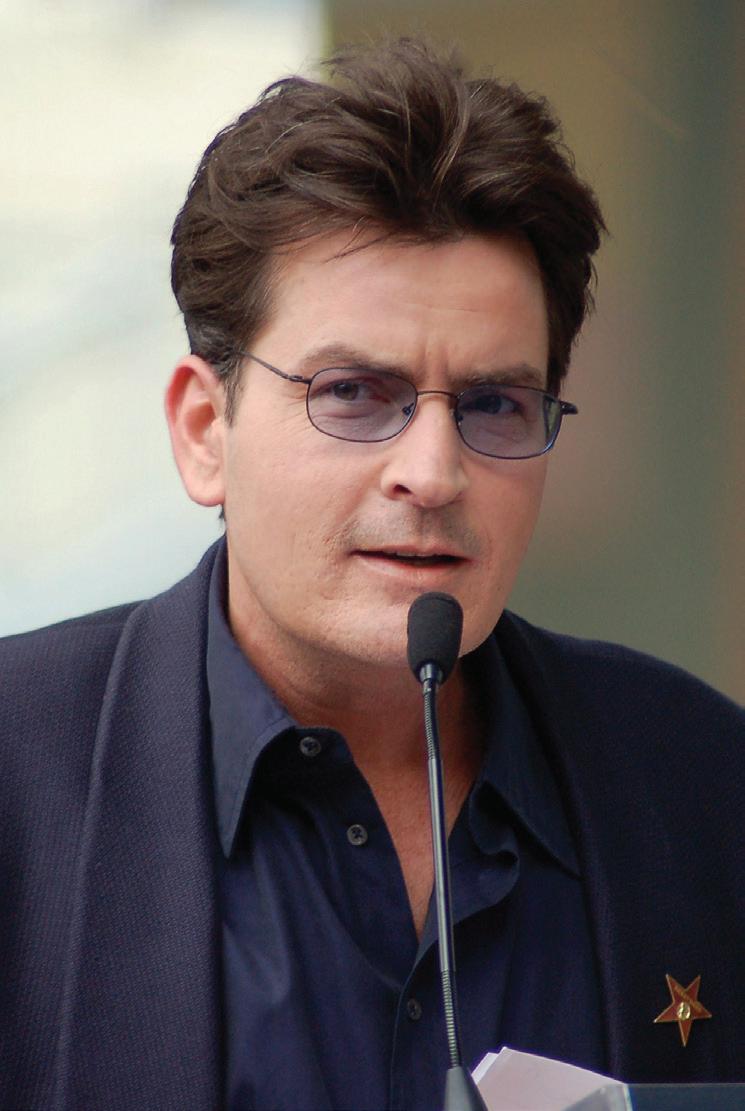
register. The camera returns to small rooms and direct language rather than victory laps.
Renzi says he entered the celebrity documentary space because a flawed subject can teach more than a tidy hero, and Sheen seems to agree.
The film does not offer forgiveness. It offers a record for a figure who once turned into a headline machine by choice and by chaos, that feels like the point.
In the end, it reminds us that redemption is not guaranteed, but honesty can still matter.
Men's ice hockey splits weekend at Ice Breaker Tournament
By CLAIRE FRANKLAND Sports Editor
Men’s ice hockey traveled down to Tempe, Arizona, to face off in the Ice Breaker Tournament from Oct. 10-11. The Bobcats were competing alongside Arizona State University, the University of Notre Dame and the University of Alaska Fairbanks.
The last time Quinnipiac competed in the tournament was in 2022 at the DCU Center in Worcester, Massachusetts, where they faced off against the College of the Holy Cross, Boston College and Northeastern University.
ALASKA FAIRBANKS
In the first slate of the tournament, the Bobcats faced off against the Nanooks of Alaska Fairbanks. Quinnipiac has a small history against Alaska Fairbanks, having competed against them once in 2013, with a 4-1 victory.
However, that was 12 years ago. Twelve years of program building and improvement. And in this matchup, the Bobcats came up short against the Nanooks, 2-1.
The Nanooks would strike first, on the Bobcats’ penalty kill. The Nanook’s setup and positioning on this goal would prove difficult for the Bobcats to break up.
Winning the faceoff back to the point, followed by a low and hard shot from sophomore defenseman Nathan Rickey. This would allow Alaska to crash the net, creating chaos in front of Quinnipiac’s junior goaltender Dylan Silverstein, letting graduate student forward Michael Citara get a quick tip-in.
Quinnipiac’s lone goal came from a delayed penalty on the Nanooks, allowing the Bobcats to pull Silverstein, playing 5-on-6.
With the man advantage, senior forward Jeremy Wilmer sneaked a no-look pass from the point down to freshman forward Ethan Wyattenbach, firing a one-time past Nanooks senior goaltender Lassi Lehti, to tie the game at one a piece.
The second frame would remain scoreless on both ends, with Quinnipiac failing to score on three power play opportunities.
The Nanooks would ultimately get the final tally of the game, with a goal from senior for-
ward Alexander Malinowski just two minutes into the final 20 minutes of play.
The goal would result from a failed clearing attempt by the Bobcats, leading to a turnover, right to the stick of Malinowski. A quick dump to the opposite corner would find a Bobcats skate and redirect past Silverstein to secure the game for the Nanooks.
Pretty unlucky on that play there.
Ultimately, Quinnipiac could not generate chances, especially on the power play. The Bobcats went zero for four on the man advantage, while further only totaling four shots during the power play.
So far this season, not including its exhibition matchup against Providence, Quinnipiac has one power-play goal, despite having 11 man-advantage opportunities.
Additionally, the Nanooks won 33 faceoffs to Quinnipiac’s 30 wins, while also blocking 23 shots to the Bobcats’ six.
The differential in blocked shots demonstrates the Nanooks’ willingness to throw bodies in front of shots, limiting the Bobcats’ opportunities to crash the net for rebound opportunities.
NOTRE DAME
Going into its second game of the tourna-
ment, Quinnipiac’s loss against Alaska lit a fire under the Bobcats, coming back with a dominant 7-2 win over Notre Dame.
This dominant win, fueled by Quinnipiac’s loss to Alaska, saw 11 different Bobcats on the score sheet, with a great influence from sophomore forward Aaron Schwartz with one goal and two assists, who had just been skating in practice in late September in a no-contact jersey.
And of those 11 Bobcats on the score sheet, the collegiate first-years had a big showing, with four freshmen.
Quinnipiac opened up scoring, getting its first power-play goal of the season from freshman forward Antonin Verreault. The Mirabel, Quebec native was not done there, later scoring Quinnipiac’s final goal of the game.
Verreault played 256 games in the QMJHL before coming to Quinnipiac, for the Gatineau Olympiques and Rouyn-Noranda Huskies, finishing with 296 points.
Freshman forward Markus Vidicek would score Quinnipiac’s game-winning goal, while also providing an assist for the Bobcats on Verreault’s first goal. Freshman forward Matthew Lansing would also tally an assist on Quinnipiac’s fifth goal, with a feed to freshman forward Ethan Wyttenbach.
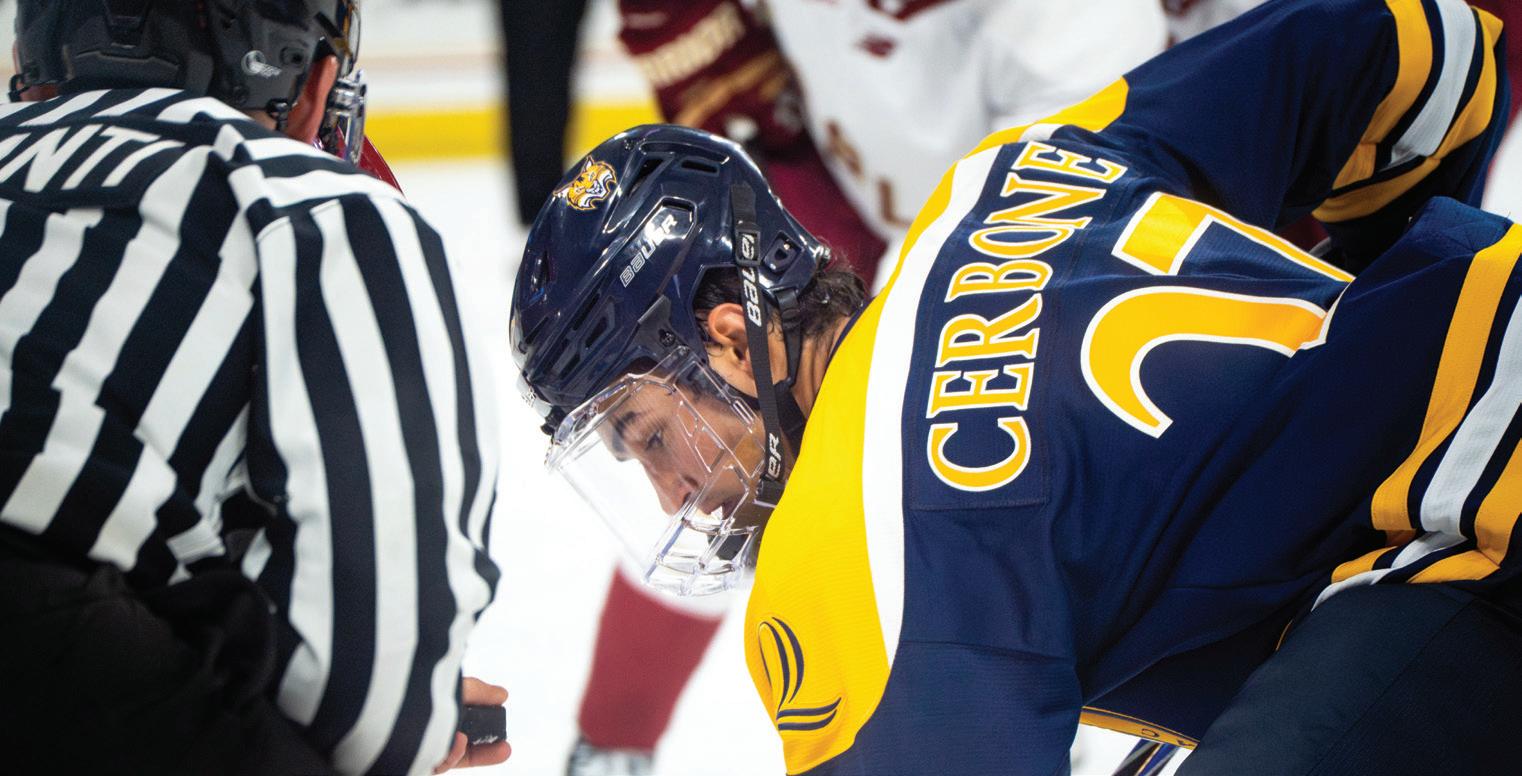
Wyttenbach has got to be the most influential Bobcat thus far in the season, currently leading the team in points with four on two goals and two assists in three games played.
The Roslyn, N.Y. native, played last season in the USHL for the Sioux Falls Stampede, recording 51 points on 24 goals and 27 assists in 44 games played.
Wyttenbach would show his speed and skill against Notre Dame, tallying one goal and an assist against the Fighting Irish. Additionally, he was named ECAC Rookie Player of the Week on Oct. 13.
While the new talent to the Bobcats’ roster had its time to shine, the returners also made their impact against Notre Dame.
Out of the box from a high-sticking penalty, Schwartz would get a feed from a battling junior forward Mason Marcellus, which he would deliver right back to Marcellus to put Quinnipiac up 2-0 going into the first intermission.
The returning talent working together didn’t end there, with Marcellus giving a sneaky backward feed to sophomore forward Chris Pelosi, from behind the net, which he lifted over the right shoulder of Fighting Irish sophomore goaltender Nicholas Kempf.
And while Quinnipiac took fewer penalties in its second matchup of the tournament, five penalties are still five more than a team would like. Especially with the Fighting Irish scoring its second goal of the game on a Bobcat penalty kill.
Against Notre Dame, Quinnipiac won 34 faceoffs to Notre Dame’s 30 wins, while also outshooting the Fighting Irish 38 to 25, commanding the shooting game.
With the win over Notre Dame, men’s ice hockey has secured six straight victories against the Big Ten Conference, beating the Ohio State University, the University of Michigan, the University of Minnesota, the University of Wisconsin and the Pennsylvania State University.
After competing in Tempe for the weekend, the Bobcats will open play in Hamden, facing off against the University of Maine in a weekend series, with the first game on Oct. 17. Faceoff is set for 7 p.m.
Dave Clarke claims 250th win with Bobcats' women's soccer
By MICHAEL PETITTO Associate Sports Editor
As players walked off Quinnipiac Soccer & Lacrosse Stadium on Oct. 11, the athletes wearing white and blue celebrated a convincing 2-0 victory over Canisius University, a formidable conference opponent.
But it was the man anchoring the sidelines, women’s soccer head coach Dave Clarke, who achieved his own unique victory, as he notched his 250th career win as a collegiate head coach.
Clarke is already the winningest coach in program history, but his 250th victory only further solidifies how instrumental his time with Quinnipiac has been.
For Clarke, it’s only a number that simply reflects how long he’s been standing on the sidelines of soccer games.
“It’s just a milestone. Hopefully, there is another 250 in me,” Clarke said.
But that simple milestone puts Clarke in an elite tier of Quinnipiac coaches. Among active coaches at Quinnipiac, Clarke ranks third in wins behind only women’s basketball’s head coach Tricia Fabbri and men’s ice hockey’s head coach Rand Pecknold.
It’s some pretty good company to be in, and with 27 collegiate seasons under his belt, Clarke’s resume speaks volumes.
In his 21 seasons as head coach, Clarke
has seen it all. He led the Bobcats to an NCAA Tournament berth in 2000, a MAAC Championship appearance in 2016 and just two seasons ago, in 2023, his team finished with the No. 1 seed in the MAAC with a near impeccable 9-0-1 conference record.
That 2023 season saw Clarke and his squad
win the MAAC championship for the second consecutive season, further solidifying the dominance of women’s soccer in Hamden.
“He has so much history here,” senior defender Madison Alves said. “So just trusting in his morals and what he does to represent this team goes a long way. He’s very knowl-
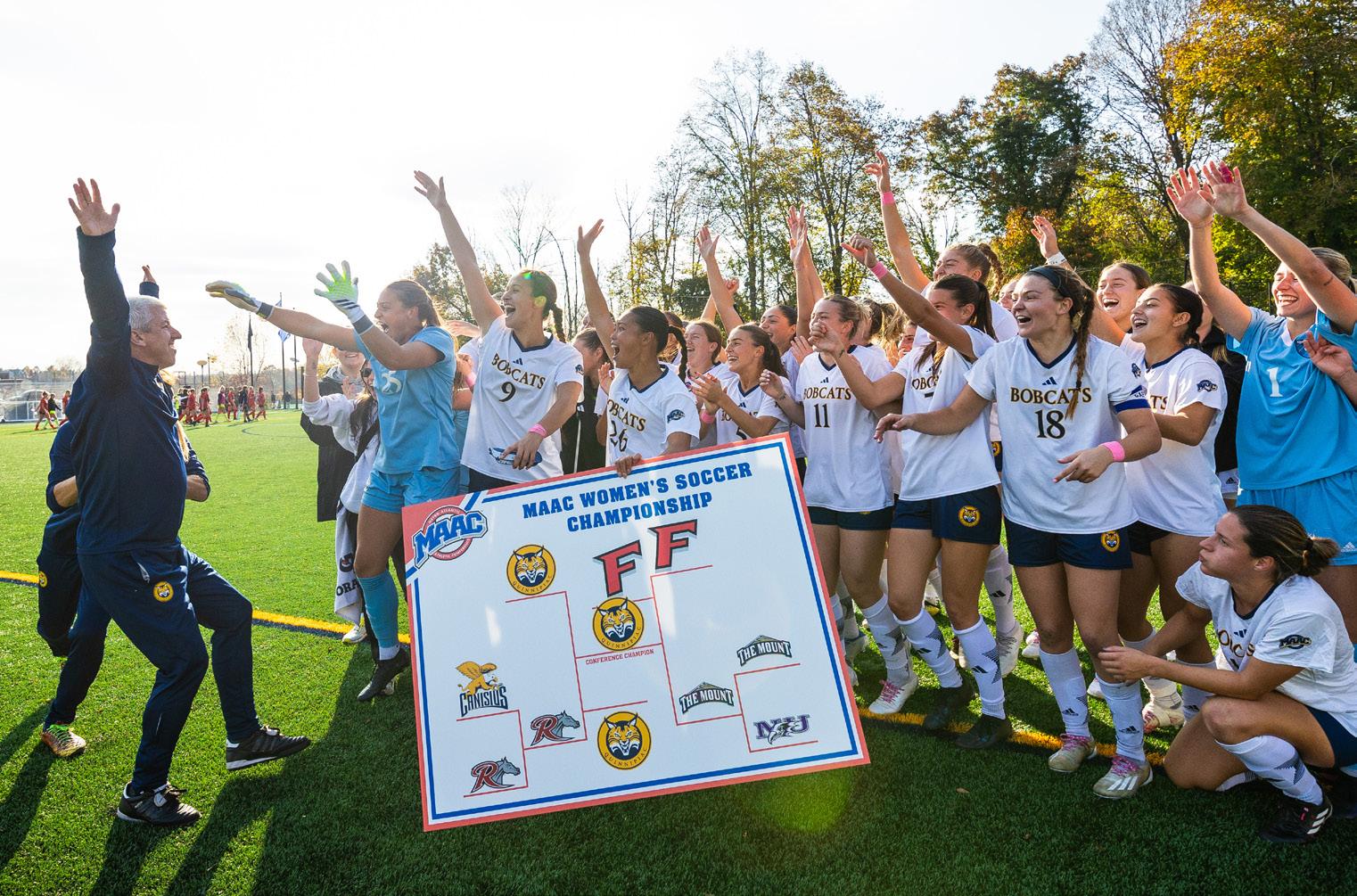
edgeable and I think just trusting him will get us to success.”
Clarke and the women’s soccer program have established a culture so well received, that they have been able to develop talent that would later go on to play at the professional level. Some former Bobcats include Olivia Scott ‘23 (Ottawa Rapid FC), Emely van der Vliet ‘23 (NAC Vrouwen) and Rebecca Cooke (Brooklyn FC).
“He’s really helped me develop as a player,” senior forward Morgan Cupo said. “Especially as a freshman, you don’t realize how much (coaches) can help you grow as a player. He’s really been that person for me who’s seen my potential and helped me grow each year.”
Whether or not Clarke has 250 more wins in him, the legacy he’s already built inside the walls of Quinnipiac is already set in stone.
And as Clarke etches this historic win milestone on his long-winded resume, something that reflects on this accomplishment is the essential role he’s played in establishing women’s soccer at Quinnipiac and the stabilized success he’s given this program over 27 years of service.
It takes a lot of time and effort to build a consistent culture at the Division I level, and Clarke has been able to accomplish that and much more.
PREVIEW from Page 12
blocked shots in 27 straight games — the longest streak in the country.
“They’ve both had a great freshman year, I think they’re both poised to have really great seasons,” Pecknold said of the two.
He added with a laugh: “If the Bruins can let me have them for at least another year after this I’d appreciate that. But seriously, they are really good players and leaders already as sophomores on our team.”
In the past, Quinnipiac barely had enough defenders to fill the three line-ups, but with nine on the roster this year, the players will have to start fighting harder for that ice time.
Sophomore Drew Hockley who walked onto the team in the middle of the season last January, has yet to see any ice time this season so far. Neither has freshman Logan McCutcheon.
Freshman Brady Schultz and Nate Tivey have both suited up for two games so far, but have yet to make an impact.
Finishing up the defending line up is sophomore Braden Blace who notched one assist against Boston College in Quinnipiac’s opening game of the season.
GOALTENDERS
Not much has changed for Quinnipiac’s last line of defense. The loss of former senior goaltender Noah Altman might be a hit to morale after losing an important leadership figure, but it has not impacted the line-up sheet.
The identity of the starting goaltender before the season was still up in the air. Last year that spot belonged to junior Dylan Silverstein, who started 23 games out of the 39 that Quinnipiac played, not ing 492 saves and allow ing 53 goals.
He still ended the sea son with a .903 save per centage. And even though junior netminder Matej Marinov only started in 15 games, his save per centage was .928 with 334 shots saved, and 26 goals allowed.
third goaltender, but now it would be surpris ing if Scopa saw any real ice time, let alone start a game with the juniors already fighting for the spot.
RECORD
Four games in, and the Bobcats are 2-1 so far.
To open up its season, No. 13 Quinnipiac took a triumphant win over No. 6 Boston College on Oct. 3, the first time that these teams have squared up since the Bobcats’ over time loss in the 2024 NCAA Re gionals finals.
“It’s a great win for us, I thought both teams battled hard,” Pecknold said following the win. “It’s a very unique situation when you play the first game of the season, so obviously it’s even for both of us.”
The next day, however, the Bobcats fell to the Providence Friars 1-2 in an exhibition match-up.

Last weekend, Quinnipiac took part in the Ice Breaker Tournament in Tempe, Arizona, playing Alaska Fairbanks in the first round — losing to the independent Nanooks 1-2.
That loss however, clearly lit a fire under the Bobcats, as they took the second game against Notre Dame with a 7-2 win.
Nothing rather significant on the first glance, but anyone who has watched these games can tell that the team has a fire behind it that it seemed to sort of lack for the past few years.
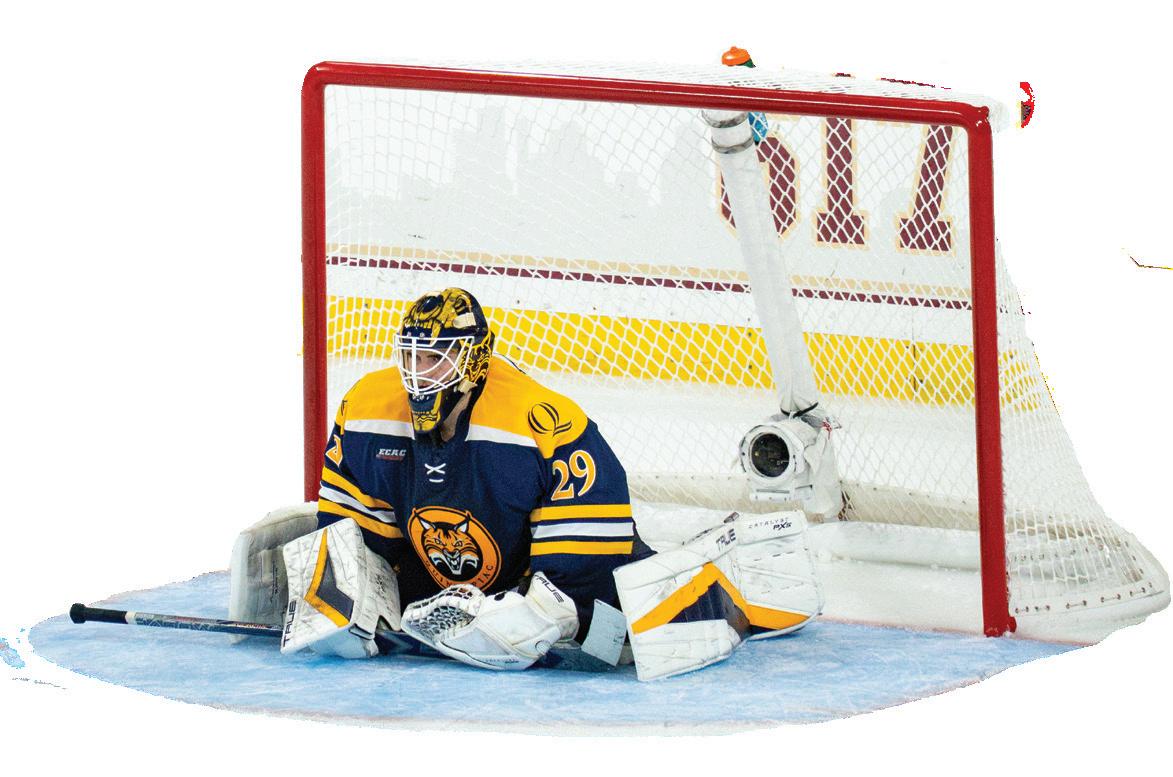
So on paper, Marinov seems like the better option, right?
Still, once the Boston College game came, it was Silverstein who suited up into the net.
“He’s doing great, big win for him obviously,” Pecknold said of Silverstein on Oct. 3. “I was excited for him tonight, to give him a start.”
Now, four games into the season, both goalies have gotten their chance to shine. Marinov started the exhibition game against Providence and Quinnipiac’s most recent game against Notre Dame, earning a win for the latter game.
Silverstein also notched a loss in Quinnipiac’s game against Alaska, tying the score between the two junior netminders in the winloss category so far (counting the exhibition match-up). So far it seems that Pecknold is trying both of them out to see who earns the spot once the ECAC season starts.
Joining the two is freshman goaltender Sam
“A lot of pace, fast skills, lot of grit, lot of intensity,” was Czerneckianair’s answer about what to expect from the Bobcats. “Teams are gonna struggle. Very fast team this year. So it’s gonna be fun.”
In all three games, Quinnipiac won more than 50% of face-offs.
Eight different players already notched a goal on the season, and the team has 102 shots recorded
However, the team also amassed 24 penalty minutes. Last season, the team had a total of 278 minutes in the sin bin, or almost 14 periods. And despite having a solid penalty-kill team, even these first three games already proved how dangerous it can be for the Bobcats, when Boston College capitalized on its power-play twice.
The Nanook’s first goal also came on their power-play giving them an advantage that the Bobcats couldn’t close after. Even Notre Dame’s second goal came from Quinnipiac’s penalty.
RANKINGS
In the USCHO Pre-season poll, Quinnipiac landed at No. 13. After its season-opening weekend, it jumped into the No. 8 spot.
And to no one’s surprise, in the ECAC Pre-season poll the Bobcats were picked to repeat as Cleary Cup champions, with Mar
REMAINING SCHEDULE
The Bobcats still have six more games before ECAC play. Opening up their home play during the university’s alumni weekend, the Bobcats will face the UMaine Black Bears in a double-header, a tradition these two teams have held for a decade now.
Following that the Bobcats will face Holy Cross, Merrimack, New Hampshire and a rematch with Alaska-Fairbanks to wrap up the pre-season.
The Bobcats will open up ECAC play against Yale on Nov. 7, which on paper should serve as a morale boost for Quinnipiac, as Yale has not won for the last 17 consecutive games.
An interesting match-up to look forward to outside of ECAC play is definitely the Nov. 15 game against No. 2 Boston University. Out of the five games these teams have played, Quinnipiac only managed to win one back in 2019 and the Bobcats haven’t faced the Terriers since November 2024.
Quinnipiac will also once again participate in CT Ice, this time facing Sacred Heart, a team the Bobcats haven’t played in the Tournament since January 2023.
Other than that, it is a regular year for the Bobcats. How well they do is up to them.
“We play with passion, we always come to the rink every single day fired up,” Leddy said. “The previous year, some days in the gym, our energy would be up and down, this year it’s been consistent. Consistency with the fire and passion, the intensity that we play at will be a huge part of this group’s success.”
FINAL THOUGHTS
Last year, Quinnipiac went 16-5-1 in the conference, but ultimately fell to Cornell in the ECAC Semifinals. With the team’s track record, it is difficult to pinpoint who they should watch out for going forward. One game they can win against Cornell, then the next day they can lose to Colgate.
On paper, this team has more than enough potential, maybe the most since its 2023 NCAA win.
Yagmur Gunes becomes the second Bobcat in program's Division I run to break 1K kills

By ALEXANDRA MARTINAKOVA Editor-in-Chief
Just a day after breaking the 1,000 kills milestone, Quinnipiac volleyball’s senior outside hitter Yagmur Gunes recorded another 1K on her stat sheet — this time in digs.
The Bursa, Turkey native was very close to that number following the team’s game against Rider where she killed that 1,000th point, needing only 15 more to reach that 1,000th dig.
And in Saturday’s win over Saint Peter’s she did.
This makes Gunes the second Bobcat to achieve this in the team’s Division I history. The first one to do it is Gunes’ former starting line-mate, former outside hitter Aryanah Diaz ‘25 who ended her collegiate career with 1,068 kills and 1,394 digs.
She is only the third player to break the 1K kill mark, after Diaz and the current record holder, former middle blocker Heather Wollyung ‘02. On the other hand, she becomes now the sixth Bobcat to break the 1K digs mark — the first one since former libero Fa’ave Kimsel Moe ‘24 who sits on No. 2 spot for the most digs at 1,186. Gunes now records 1,010 digs (and 1,021 kills) as of publication, with 11 games still left to play in her last regular season, only
ing and keep buying in if it wants to escape the cycle it has found itself
But the main goal for this season? Czerneckianair
“Win a national

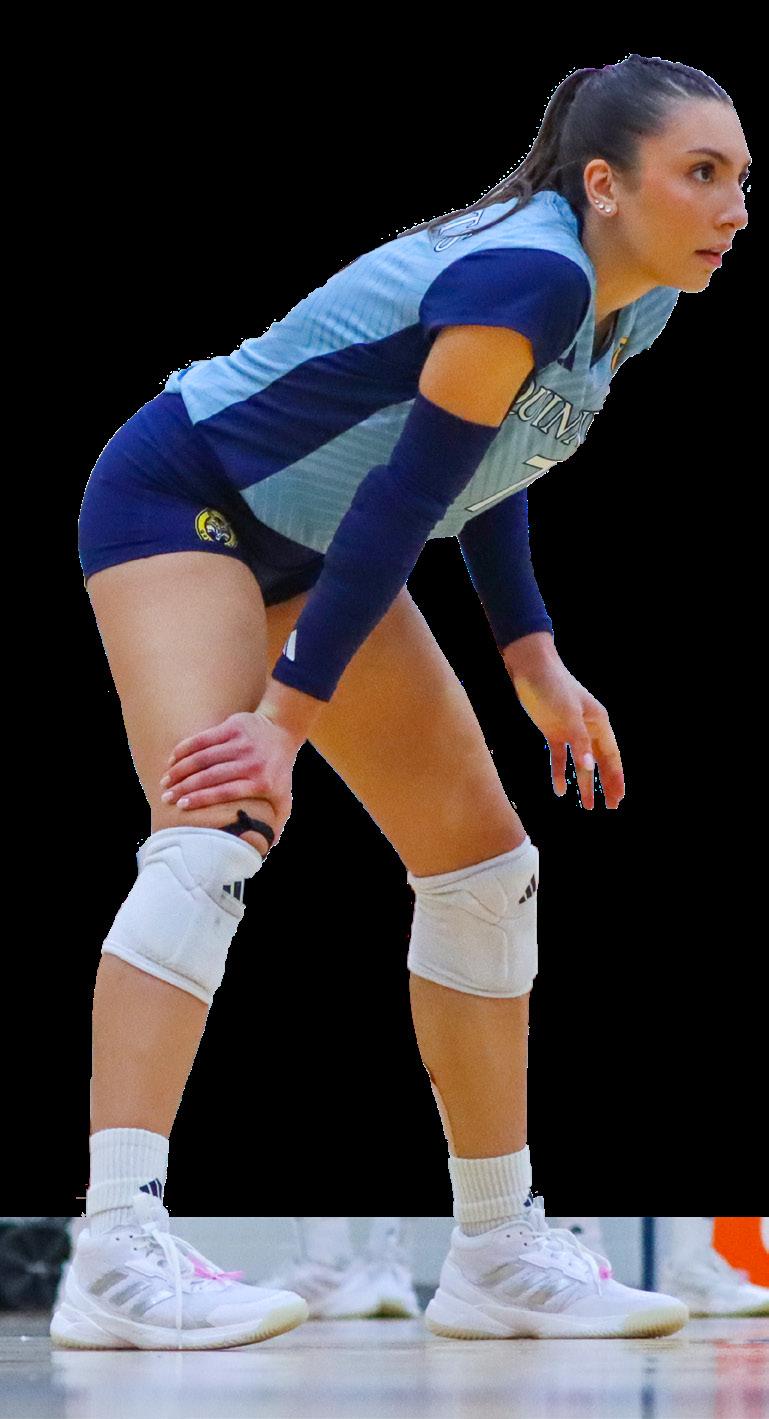
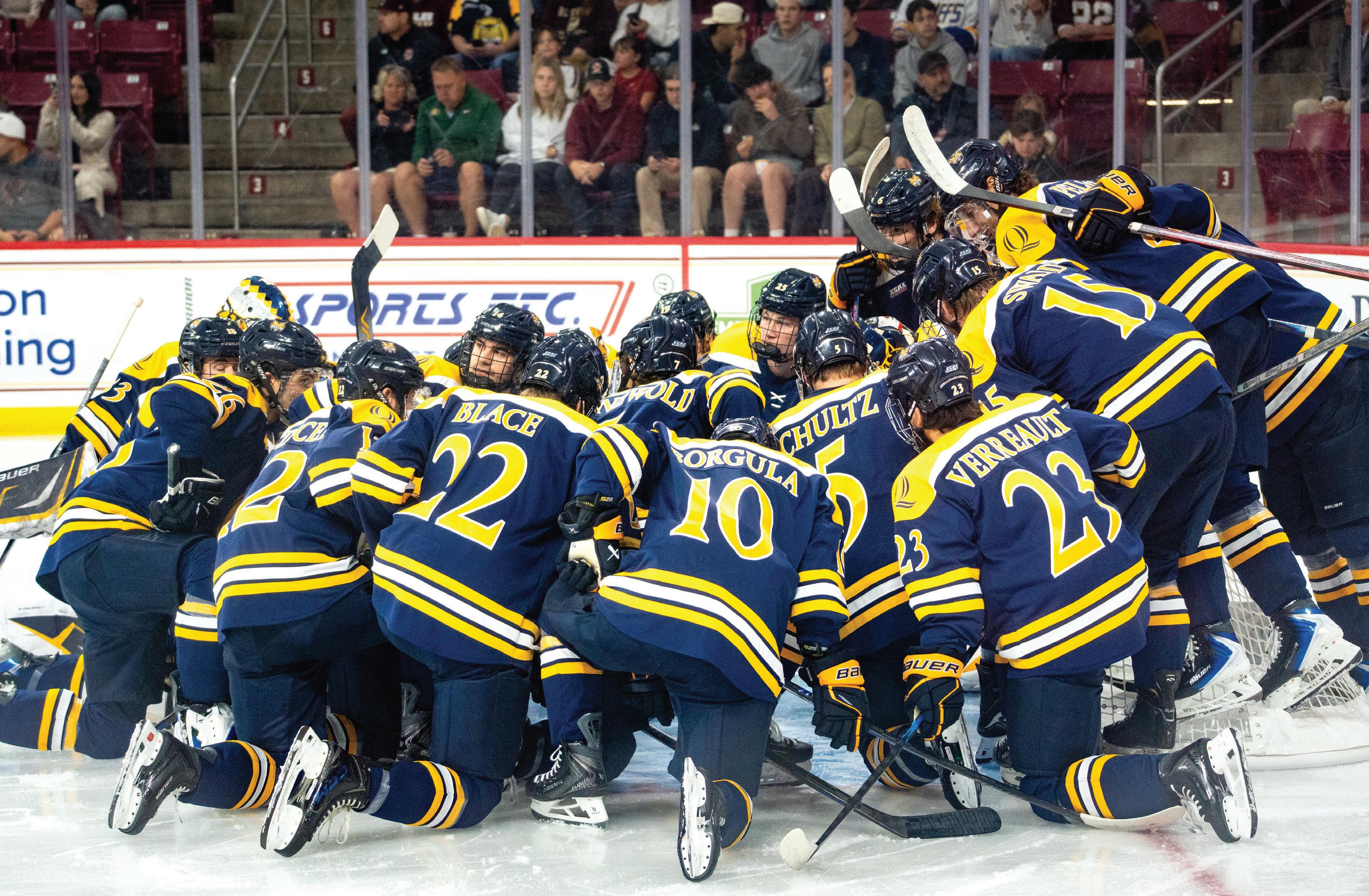
Breaking down Quinnipiac men's ice hockey's 50th season
By ALEXANDRA MARTINAKOVA Editor-in-Chief
“I like our group this year, I think we still need to mature a little bit.”
“We gotta find a way to make these kids buy in and once we do that we’ll be rewarded.”
Anytime head coach Rand Pecknold talks about his team, you definitely hear him use these phrases in one way or another.
And on paper, it makes more than enough sense. Over the past three years, the Bobcats’ roster has seen a pretty significant turnover, with 11 new names joining the roster this year, replacing the same number lost in the off-season to graduation and transfers.
“We don’t change much each year, we tweak things here or there,” Pecknold said in a pre-season interview. “I think we make sure that we get players that fit our culture, fit our iden tity and certainly they need to mature once they get into our program but I think we do a great job on bringing the right kids in the door and that’s why we got success.”
And while the number of players in the locker room might have stayed the same, there is a signifi cant differ ence when it comes to the size of the senior class.
This year only six players are seniors — no graduate students — and only three of them have spent more than one season on the squad.
“We have guys like (senior forward) An thony (Cipollone) and (senior forward) Alex (Power) and (senior forward) Victor (Czerneckianair) who have been here four years, so
they definitely know what they’re doing, the mentality was built into them from day one,” senior defender Charlie Leddy, assistant captain in his second season with the Bobcats in a pre-season interview said.
“But guys like me and a couple other transfer older guys, we had to readjust and relearn things. We got a lot of differences between young and older guys, we kind of gotta exclude that and just work. We’re all here for a reason, we’re all in the same place at the same time so let’s stay together.”
On the opposite side of the spectrum are nine freshmen, Quinnipiac men’s ice hockey’s largest incoming first-year class since 2019.
“Honestly they’ve been great,” Czerneckianair said, who boasts the ‘C’ on his chest this season
who will do their best to achieve that in the 2025-26 season.
FORWARDS
Quinnipiac’s roster sees 10 returners on its front line, alongside five newcomers. With only 12 spots across the four lines — and the caliber of Quinnipiac’s incoming class — all of the players have their work cut out for themselves.
“It’s a work in progress, kids are still battling for spots, to be on the power-play and kill penalties and then things change over the course of the year, guys that might not be killing now might be doing it in January,” Pecknold said. “We push our kids to be better, we don’t kind of lock them into roles. They can always change their fate and get more ice time and guys battle everyday.”

Let’s take a look at the roster of players
One of the most significant returners is sophomore Chris Pelosi, who in his first year of collegiate play netted 13 goals — tied for the second most goals amongst ECAC freshmen last season.
The center already has two more goals this season to his name and is slowly but surely shaping up to be one of the most important players
Another name to keep an eye on is senior Jeremy Wilmer, who netted 15 goals last season and recorded 26 assists.
His experience on the front line is going to be crucial for the Bobcats as he’s one of only four senior forwards on the team, only three of whom have appeared in all 38 games last season.
These seniors include Czerneckianair, Anthony Cipollone and Alex Power.
An important name on the roster is junior Mason Marcellus. The center has been a consistent player since his first season with the Bobcats.
Sophomore Aaron Schwartz was seen practicing in a no-contact jersey at the end of September and yet has already notched three points in the game against Notre Dame.
Among the newcomers, freshman Ethan tenbach is definitely a stand out. The second youngest player on the team already has four points to his name (two goals and two assists).
Wyttenbach is a Calgary Flames pick with only one year of play in the USHL, where
he netted 24 goals.
To round out the NHL draft picks, freshman Matthew Lansing, a Vancouver Canucks agent, joins the Bobcats with three years in the USHL under his belt. He already nets a goal and an assist. Freshman Markus Vidicek is another name that battles for his spot on the first line. The center played five years in QMJHL and recorded 328 points.
Another name hailing from QMJHL is freshman Antonin Verreault, who netted two goals so far and one assist.
The only freshman without a point to his name as of right now is Ben Riche.
DEFENDERS
Only four players on Quinnipiac’s blue line have returned from last year’s roster — and all of them are only in their second season with the Bobcats.
That might not be an inherently bad thing. Quinnipiac has seen some struggle on its defensive line-up with player inconsistencies and injuries. Having what is essentially a new team could actually work to Quinnipiac’s advantage.
A big loss came in the form of former senior forward Jack Ricketts who earned the 2025 ECAC Gladiator Best Defensive Forward accolade.
A stand-out amongst the new defenders is freshman Graham Sward. The 22-year-old Canadian has not only years of experience from WHL, but also played in two AHL games with Manitoba Moose and 47 ECHL games under Norfolk Admirals — both affiliates of the Winnipeg Jets — last season, totaling 13 points.
Sward is the only defenseman right now with a goal to his name, which he netted during the opening game as a part of the second defensive line.
His linemate, senior Will Gilson, is Quinnipiac’s only incoming transfer on the season. Gilson previously suited up for the RPI Engineers where he led the team both in points (24) and assists (16).
The starting defending line for now still belongs to the returners, and that to Leddy and sophomore Elliott Groenewold.
Alongside Pelosi, Groenewold is a Boston Bruins prospect, who last season recorded
